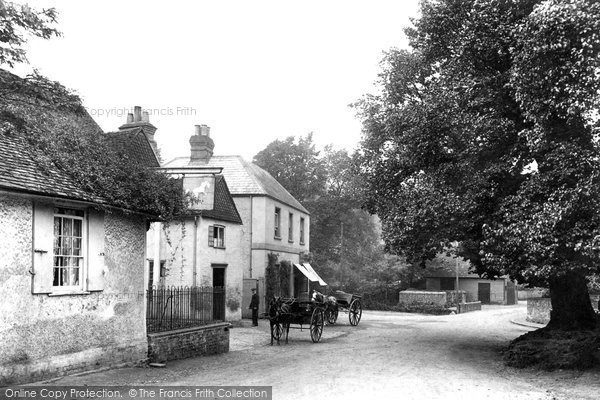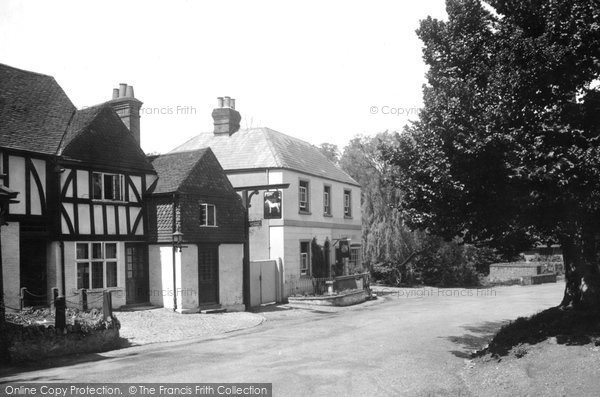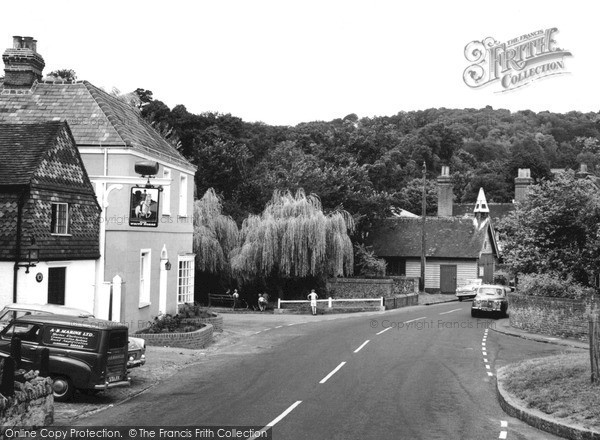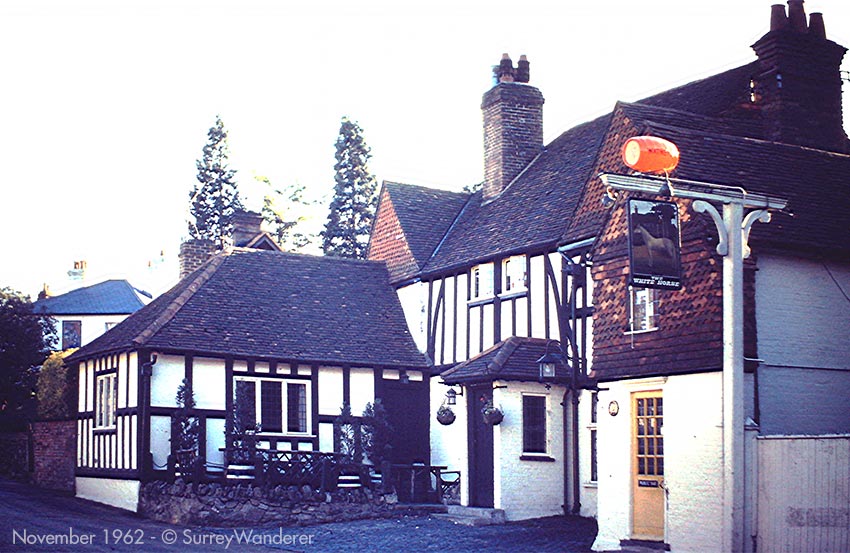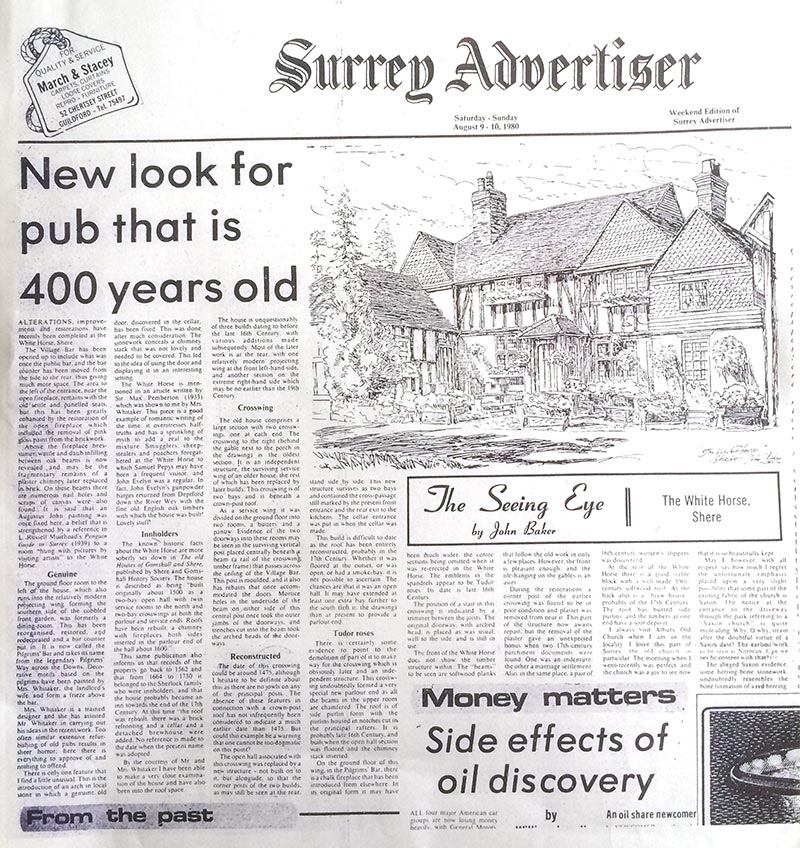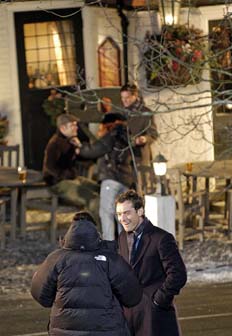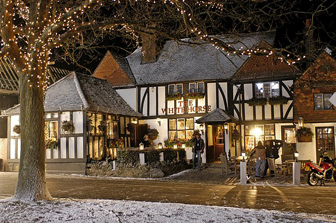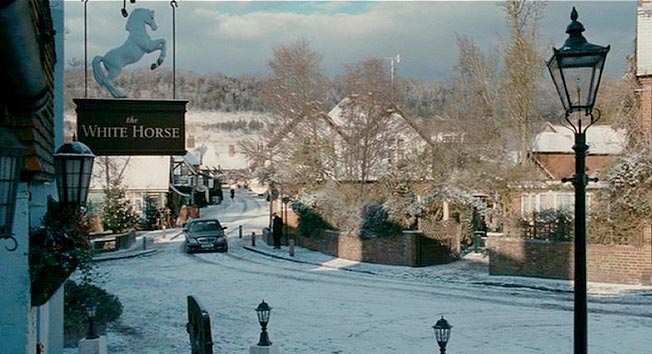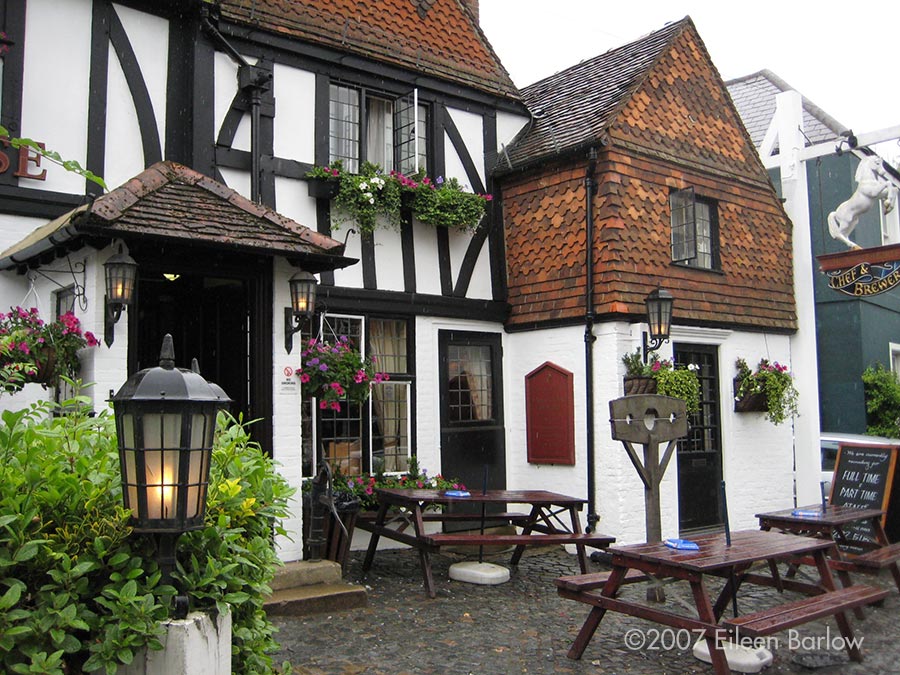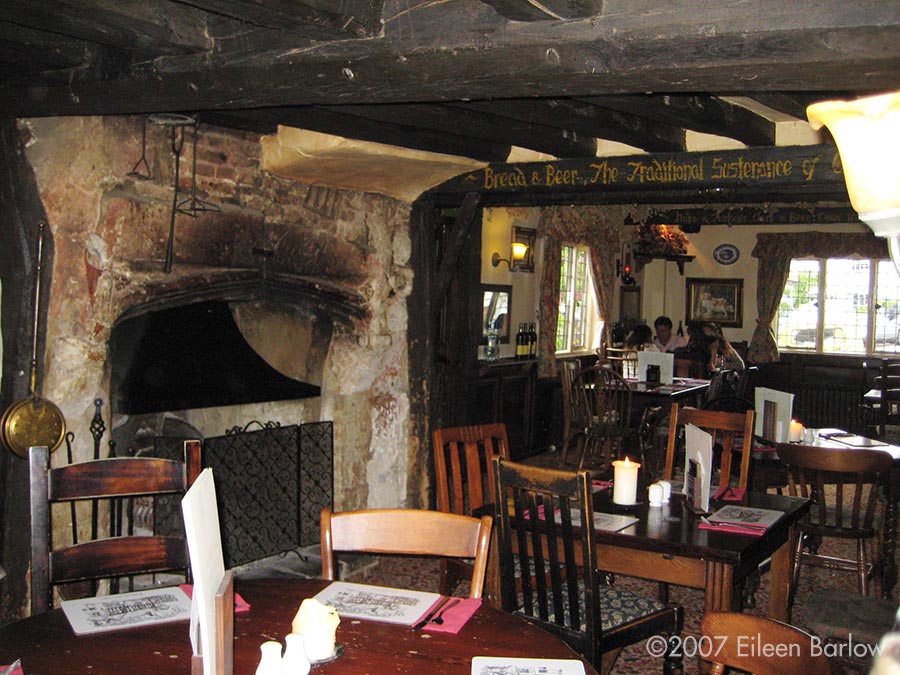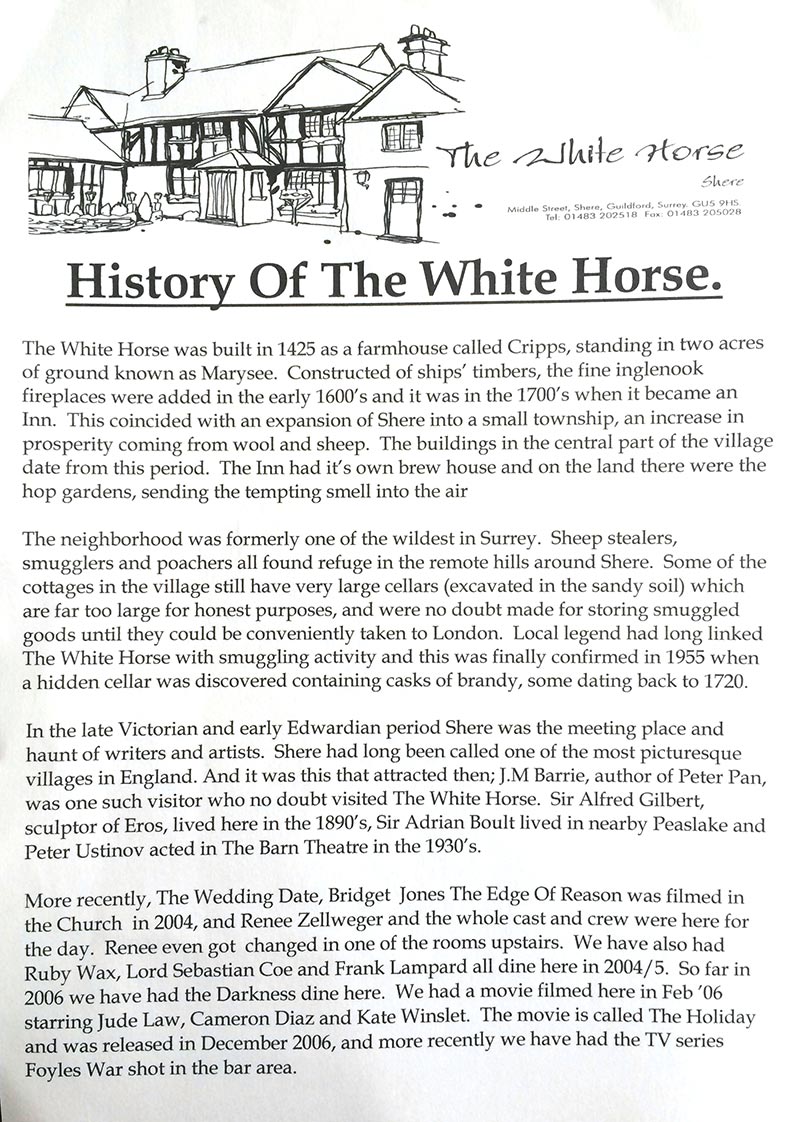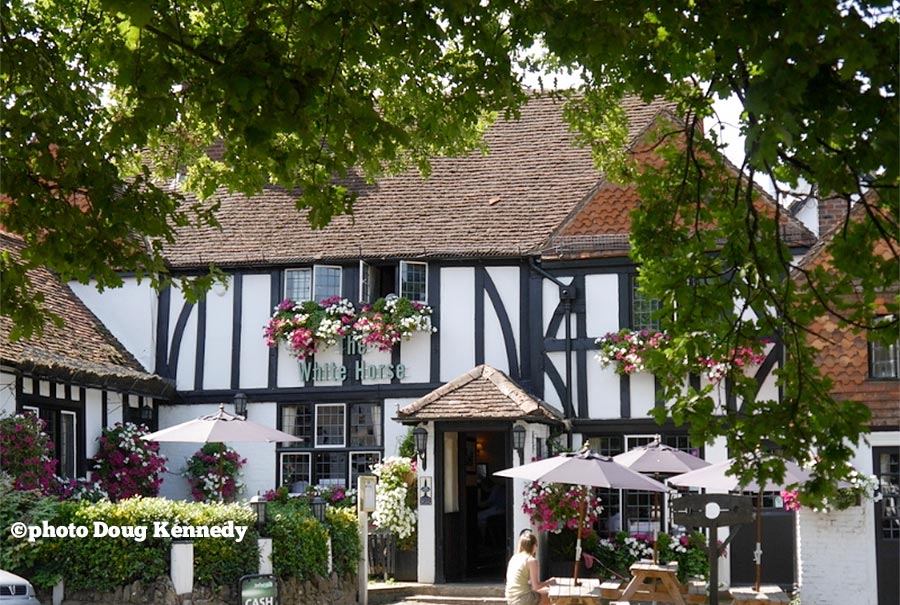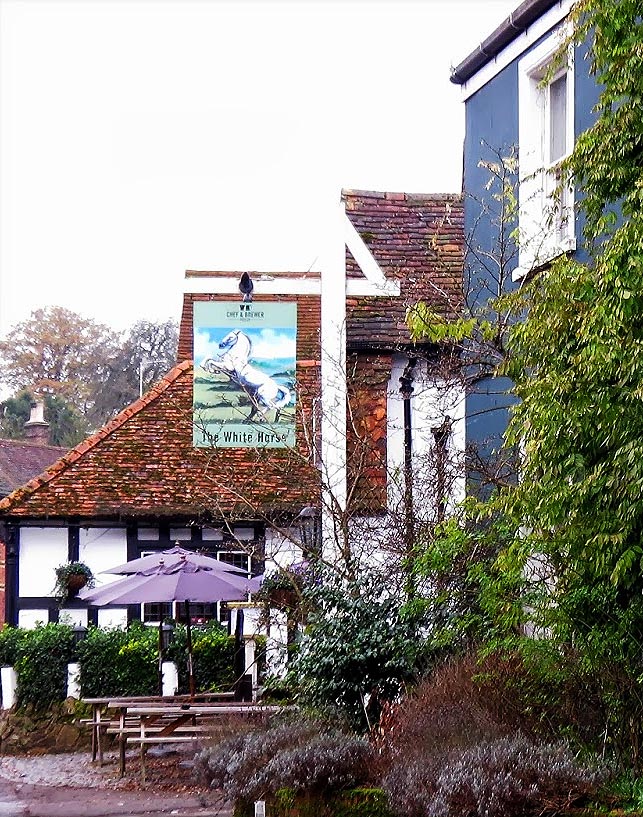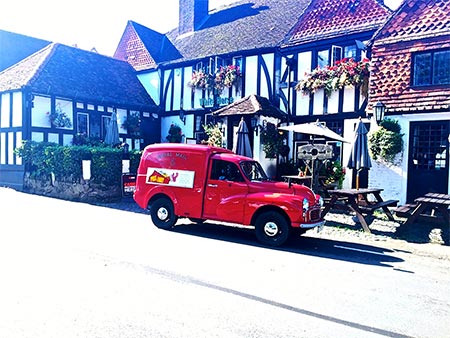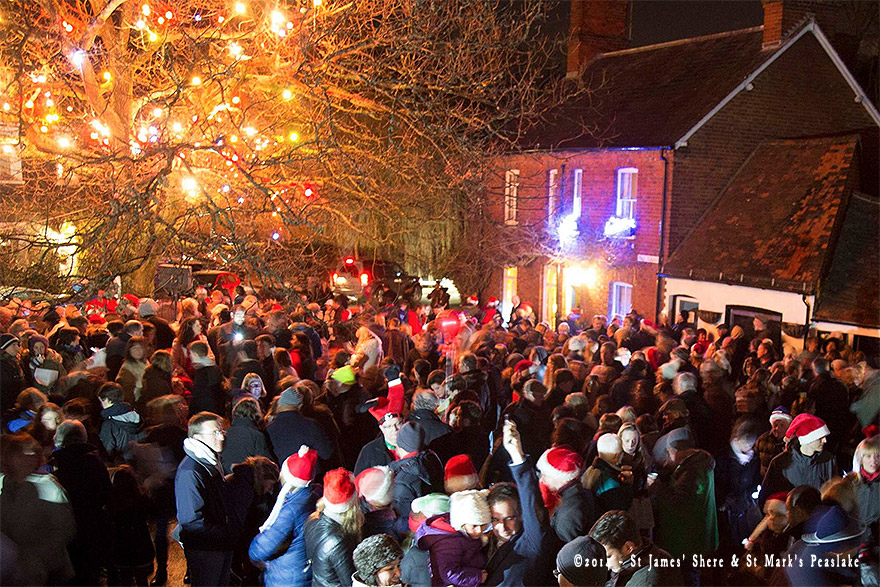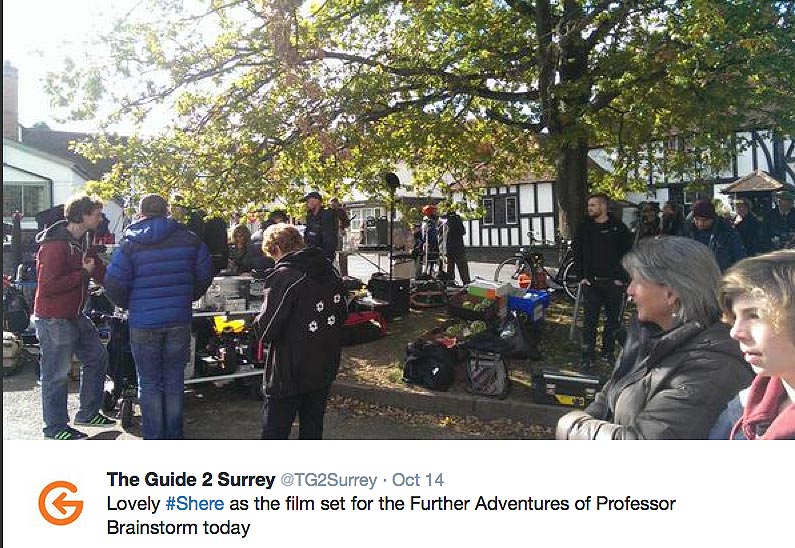White Horse - Shere
This page is dedicated to the History of The White Horse in Shere.
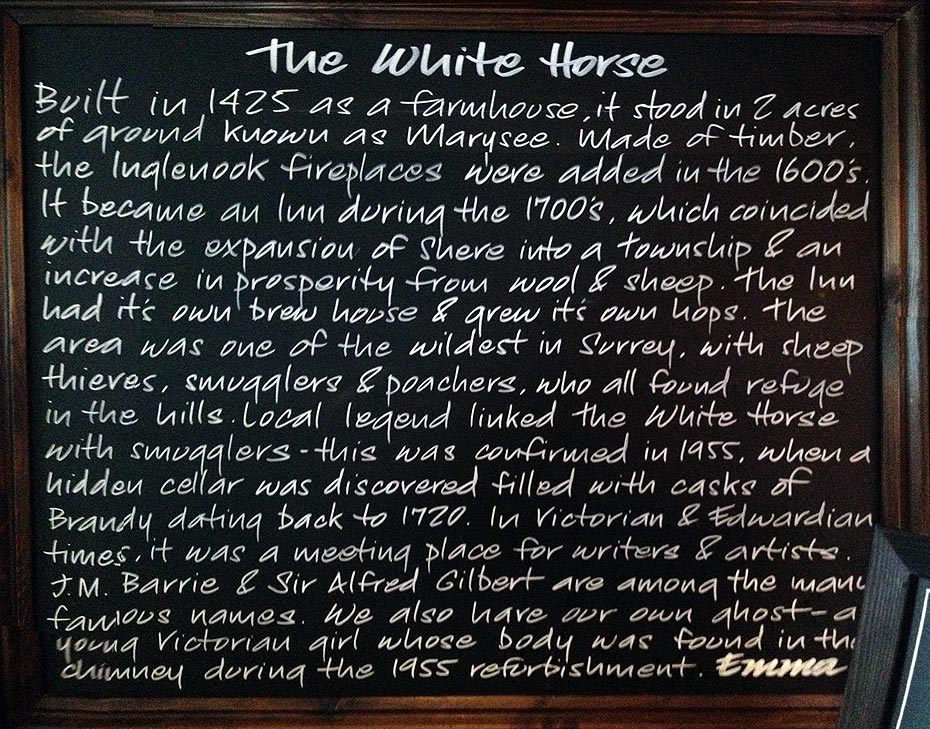
This chalk board displayed to the left of the bar.
The White Horse country pub is a Grade II Listed Building at the very heart of the Surrey village of Shere, set against the backdrop of the North Downs.
Originally a farmhouse named 'Cripps', built in 1425. This farmhouse included a couple of acres of land called 'Maysse'. Part of this land was used as a hop garden. An inglenook fireplace and new wing were added in the 16th century at the same time as Shere began to prosper, thanks to the wool trade. As the years progressed, and traditional ale was replaced by hopped beer in the late 18th century, the farmhouse was transformed into an alehouse with its own brewery. More rooms were then added as business flourished.
Two local ladies were not so happy about The White Horse’s success, and in 1886, they comissioned a small drinking fountain to be built at the top of Middle Street. Being very religious, they believed alcohol was the devil, the root of all evil,and they wanted people to have an alternative local drink!
During the last century, extensive renovations have uncovered hidden treasures from the past at The White Horse, including parchment documents and a pair of Elizabethan shoes - a good luck token often buried in the walls of ancient houses. In 1955, a secret cellar was also discovered on the premises, containing barrels of brandy. This fuelled stories that the pub was a favourite haunt of smugglers! imbers from Nelson's ship, Victory, form the beams in the restaurant.
The Askey family managed the White Horse from 1866 to 1946 just as the second World War ended.
1866 - 1879 Thomas Askey and his wife Frances
1879-1923 Son, Richard John Askew (Dickie) and Wife Catherine (Kate)
1923-1946 Son, Frank Thomas Askew took over the management.
Richard and Catherine had six children and it was Frank who continued to manage the pub. Born 26th January 1881, Frank's trade was Carpenter (1901 census). His father Richard John Askew was a 'Harness' maker, 'Artist' and 'Publican'. A very keen artist who repainted the Inn sign with encouragement from fellow artists. The parlour was hung with many of his paintings and many artists visited the White Horse, including Richard Jack, Joseph Longhurst, John Barlow and Will Heath Robinson. Sir J.M. Barrie frequented the Inn from time to time and
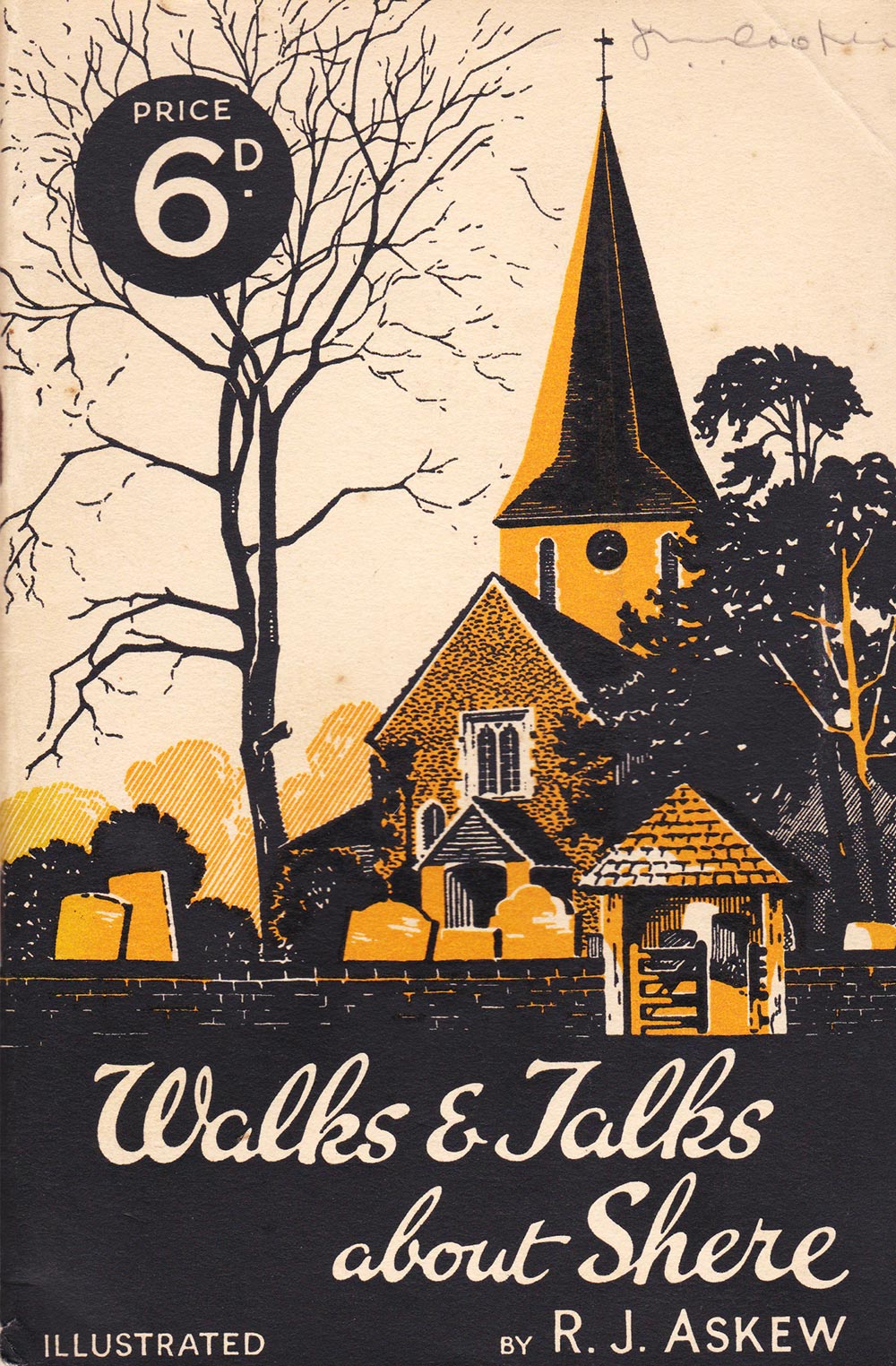
Richard Askew wrote and illustrated a book called 'Walks and Talks about Shere (more below in the 1909 section)
Many thanks to Kate for the Askew family information and the connection to the White Horse. Kate lives in the village and is Thomas Askew's Great Great Great grand daughter.
Her father John who has also lived in the village all his life, still drinks regularly in the White Horse and also worked behind the bar in the 1960s. Joh's father Maurice (d.1996) was the son of Arthur (d.1970) who was one of six children to Richard John and wife Catherine.
|
Past Articles/Paintings/Photos in chronological date order:
|
Policing the Victorian Countryside
1830
1830-1840: Sheep stealing was rife in the Shere district during the years 1830 to 1840. The parish constables were unable to cope and horses and sheep that disappeared in the south of the county of which most found their way to London. One of the gang's meeting places was The White Horse Inn, Shere and it was not uncommon to see a great deal of poached game on the premises as the men enjoyed themselves. They appeared immune from punishment but then two of the gang took to housebreaking at a large house at Wonersh.
A constable from Godalming believed to be Biddlecombe traced the men concerned to an inn in Sussex. Enlisting the help of local harvesters they came across the suspects and joked with them and somehow Biddlecombe persuaded them to allow him to handcuff them. Once handcuffed the men were arrested for breaking into Squire Spark's place, taken to Guildford where they were convicted.
In addition to the Shere mob there were gangs at Elstead and a team known as the Hut Men at Peper Harow which were broken up soon after the Surrey Constabulary was formed.
Victorian Crimestoppers: In many parts of the country Felons Societies were established to offer rewards to catch criminals and such an association was formed in Guildford in 1808. The Stoke Protection Society offered rewards of £10 for a murderer, burglar, robber or arsonist; £5 for stealing, shoplifting and receiving stolen goods; a guinea for smaller crimes.
Parish constables sometimes undertook duties for long periods as did James Stedman at Pirbright from 1812-1837. There were paid constables at Shere, Thomas Williams, with Peter Pearce at Shamley Green both supervised by Superintendent Biddlecombe of Godalming. There were also paid constables stationed at Farnham, Dorking, Chertsey, Chobham, Thorpe, Windlesham and Nutfield who in time joined the Surrey Constabulary - not that many survived very long within a disciplined service.
SOURCE
|
Public Houses & Hotels in the 1878 Surrey Directory
The Surrey Directory listing - White Horse, Thomas Askew, Shere, Guildford.
SOURCE
|
1890 - White Horse Inn

White Horse Inn - Note the Pub sign and the second door (right) positions
|
1892 - Old Bailey Witness - Richard John Askew
October 1892:
992. HENRY BEAUCHAMP (30) was again indicted for feloniously setting fire to a stack of wheat, the property of John Coe.
MR. DE MICHELE Prosecuted.
RICHARD JOHN ASKEW . I am the landlord of the White Horse, Shere, in the county of Surrey—the prisoner was at my house on 18th September, and left about a quarter to 5 in the evening—I have made this plan (produced)—it correctly shows the path across the fields from my house to Gomshall Station, also the main road from the same place to the same round Frank's Corner, past the Black Horse to the station—it is quite correct as far as I know—I am not a surveyor, but I have passed my examination at Kensington, and have a master's certificate for drawing—I know how to measure and survey—this is merely a rough sketch—the way across the fields is a little farther round than the main road—it goes past Mr. Coe's rick and Mr. Farhall's farm, and also past some ricks of Mr. Farhall's—there is a level railway crossing about 150 yards from Mr. Farhall's rick; that is marked on the plan.
EDWARD FARHALL . I am a farmer, and live at Shere—on Monday evening, 18th September, about 20 minutes to 6 I was near my house, and saw the prisoner coming down the corner from the direction of the heath—I had a friend with me—the moment the prisoner saw me he turned round in a most suspicious manner, so much so, that we stood still and looked at him—he turned round, and went away again towards the heath, which is about half a mile from my house, not in the direction of the station, but quite the contrary direction—the next thing I saw was Mr. Coe's rick on fire—that was between me and the station, and directly after, within two or three minutes, I saw my own rick on fire—Mr. Coes rick was in a field to the right of the path going towards the station—my rick was farther on, also on the right of the path towards Gomshall Station—the distance between my rick and Mr. Coe's was about 300 or 400 yards—that was the last I saw of the prisoner.
Cross-examined by the Prisoner. It was about 20 minutes to 6 when I saw you—you were about 16 or 17 yards away—I did not speak to you—when you turned round you went in the direction of the heath.
By the COURT. I did not know him before—he was quite a stranger to me—it was quite light at the time.
ALFRED FELLOWES . I am a bricklayer, living at Gomshall—about 10 minutes to 6 on the evening of 18th September I was going through the fields on my way home from work—I was between Mr. Farhall's house and Mr. Coe's rick—I saw the prisoner coming up from the path leading from the church—that is a cross path leading into the path that runs across the fields to Gomshall Station—he stepped across the other path leading to Gomshall, and went straight up to Mr. Coe's stack, and went round the left-hand side of it—I was coming the same way as he was—I had a good opportunity of seeing him—I have no doubt he is the man—I did not notice the rick on fire till after I got home—I could see the rick plainly from my kitchen window—I live in Queen Street, Gomshall—I saw the fire from my window—I should think that was about eight minutes after I had seen the prisoner go round the rick—on seeing it, I went back, and saw that portion of the rick was on fire where I had seen the prisoner—shortly afterwards I saw another fire at Mr. Farhall's—at half past 6 I went with Police-constable Finch to the railway station at
Gum hall and there identified the prisoner—it is about 700 yards from Mr. Coe's stack to the station.
Cross-examined. You were going the same way as me—after you came up the path I passed you—I left you at the stack.
By the COURT. The stack is surrounded by a hedge, but it is away from it—he did not go over the hedge; he came through the pathway in the same field as the stack was—there was nothing between the stack and the path; you step from the path to the stack—it is barely 40 yards from the path—he did not go out of my sight, not when he went round the stack, because as I walked on I could see him—I had my back to him then—I did not turn round to look at him—I don't know what became of him—I did not suspect any mischief; I thought, perhaps, he was going there for a certain purpose.
SARAH JELLY . I am the wife of Edward Jelly, and live at Albury Heath—on Monday, 18th September, about 5.55 p. m., I was crossing the fields to Gomshall Station with my daughter; I was carrying a box—as I went along the path that runs through Mr. Coe's field where the rick was, I saw the prisoner round the rick; he was close to it—I continued my walk through the path until I got to Mr. Farhall's field—I stopped there to rest—there is a hedge there dividing the two fields, just about half way between the two fields—while resting there I looked round and saw the prisoner—he stooped down to pick up his overcoat—he was close to the rick—he put on his overcoat and walked round the rick—when he got round the other side he moved away from the rick and looked around, and in an instant the rick was on fire, and I saw him run away down into the same footpath I had come along—he stopped at a little gate leading into Mr. Farhall's field, which I had come through, and came into the field; he did not pass us—I continued my way on to the railway station, where I saw Constable Finch take the prisoner into custody about 6.30 p. m.
Cross-examined. I was about 300 yards from the rick when I saw you—I said 150 yards at Guildford—after that you were behind me, and I did not see you any more till I saw you at the station—I saw you come into the same path I was in—I saw you from the wicket gate.
GEORGE HENRY HYDE . I am a gateman in the employ of the South eastan railway company the level crossing at Gomshall—at a little before 6 o'clock on 18th September I saw the prisoner—he came up the line to cross the railroad; he came from the direction of the path that leads across the fields to the station from Mr. Farhall's yard, but he was going across the contrary way towards Ewhurst (Referring to the, plan)—he came across the line to go through the little gate, and I said "It's a nice day, sir"—he said "Yes," and said he had lost his way, and he asked me which was the. way to Gomshall Station—I said "You are going the wrong way altogether; there is Gomshall Station"—we could see it, and I pointed out the way to him—he said "I have just come from Shere, and I have lost my way"—I then went to my house, and as I went up the slant I saw Mr. Farhall's rick on fire right in front of me—the farm is about 150 yards from my house.
Cross-examined. My house is the best part of half a mile from Mr. Askew's—when I saw you it was about 10 or 12 minutes past 6 o'clock—I had just sent the 6 o'clock train past; it was light
Prisoner. I never spoke to him—I had been there six months, and it is a funny thing that I should not know my way to Gomshall.
Witness. Those were the last words he spoke to me—I did not know him before—I am sure he is the man, because I stood talking to him.
WILLIAM FINCH (Surrey Constabulary 22). On 18th September, at 6. 10 p. m., I received information in consequence of which I went in the direction of Mr. Coe's rick—I found it encircled in flames—at the same time I saw another rick on fire at Mr. Farhall's at Gravelpits Farm—I went there and received some information, and then went to Gomshall Station—I saw the prisoner there on the down platform about 6.30 p. m. and the witness Fellowes—I said to him in the prisoner's presence "Is that the man you saw at the rick?"—he said "Yes, that is the man"—I then took the prisoner on one side and asked him his name twice; he did not give it me—I then charged him with setting fire to Mr. Coe's wheat stack—he made no reply, and I took him into custody—on the left shoulder and hip of his overcoat I found a quantity of seeds, chaff, and small pieces of straw and buzzy things such as you would get from a rick—I conveyed him to Guildford by train—on the way he said it was foolish to chastise him for setting tire to the ricks—he said that on more than one occasion—ha said he had taken a third-class return ticket from Guildford, and had been down to Dick Askew's that morning—I saw him deliver up his third-class return ticket at Guildford Station—on the way to the police-station he kept inquiring how much farther it was—I said "Not much farther"—on getting close to the County Police-station there is a narrow passage—I said "This is the way"—he was then in the centre of the high-road, and as soon as I said "This is the way,"he bolted and ran in the direction of Stoke—I ran after him and caught him in about 100 yards—I then put the cuffs on him and took him to the station, and when I took the cuffs from him at the station, he had this knife (produced) in his right hand—I saw his hand before he ran away, ho had nothing in it then—he must have got it when he ran away; it was not open—I searched him and found two boxes and a half of lucifer matches; they were partly full, one containing more than the other—there were three boxes, but one was broken about and only contained a few—I also found some loose matches in his pocket.
Cross-examined. When I arrested you at the railway station I gave you a touch and said "I want to speak to you round the corner"—you said "Speak to me!"—I said "Yes," and then I called Fellowes's attention to you and said "You will be charged with setting; fire to the rick"—you made no reply to that—you did not ask me where and ask me to show you, nor did you say "I know nothing about it"—you did say "Where?" you refresh my memory now, and I said "Mr. Coe's, down here, where you came along. "
CHARLES WALTER BARKER . I am Deputy Chief Constable of the Surrey Constabulary—the prisoner was brought in custody to my office I entered the charge against him and read it over to him—he said "It is a mistake, I never left the road at all; when I came out of Askew's I went past Frank's shop to the Black Horse at Gomshall"——Frank's shop is at the corner of the main road on the way to the station—he would have to pass the Black Horse.
JOHN COE . I am a farmer at Abinger—I have a farm called High House Farm, at Shere—on that farm there was a wheat rick on 18th September; it stood about 30 or 40 yards from the pathway across the
fields—I have not measured it—the path runs along the side of the hedge and the rick is in that field—it was burnt on Monday night, the 18th; the value of it was about 200l.; it was nearly all destroyed—you go along the path past my rick and come to a gate leading into Mr. Farhall's field; you can get to Gomshall Station that way—I should say it would take from 18 to 20 minutes to walk by that route from the White Horse to Gomshall Station—I have never timed it, but if I was going it would take me that time—it would not take me from 5 to 6.30—I do not know anything of the prisoner, only from what I have heard since the fire—he is a perfect stranger to me—I can give no suggestion why he should have done this.
The Prisoner's Statement before the Magistrate. "I don't wish to say anything more that what I have said."
RICHARD JOHN ASKEW (Re-examined). I have known the prisoner for some time—I suppose I am sometimes known as Dick Askew by most people—I should not think the prisoner knew me sufficiently well to speak of me as Dick Askew; I should be surprised at his doing so—he was not in my service—I knew him at the time he was living as groom to the Duke of Northumberland, who lives about ten minutes' walk from my house—the prisoner used to come occasionally to my house with other grooms; that was how I knew him, but only in that way—he came to my house on the afternoon of 18th September and had some bread and cheese and ale there—I served him with it—he said he had left the service and had come over for a holiday—he paid for what he had—I saw him leave at about 5 o'clock—my house is about 400 or 500 yards from Mr. Coe's rick, but there is a nearer way by the path, that would be about 300 yards—when he. left my house he turned to the right in the direction of Mr. Farhall's, towards the heath, the opposite way to the station—(Referring to the plan) he went in this direction—that would lead to the rick.
Prisoner's Defence. When I came out of Mr. Askew's I went down the main road, and when I got as far as the Black Horse I had two glasses of ale and stopped there some little time, and from there I went to the station to wait for the train and the policeman arrested me.
GUILTY . There was another indictment against the prisoner for setting fire to Mr. Farhall's rick, and Constable Barker stated that he was suspected of another similar offence, and that he had been dismissed from the service of lard Onslow on the Saturday precious to the fire in question. — Five Years' Penal Servitude.
SOURCE
Richard Askew
was also the Shere and Albury Fire Chief - as well as the Proprietor of the White Horse pub.
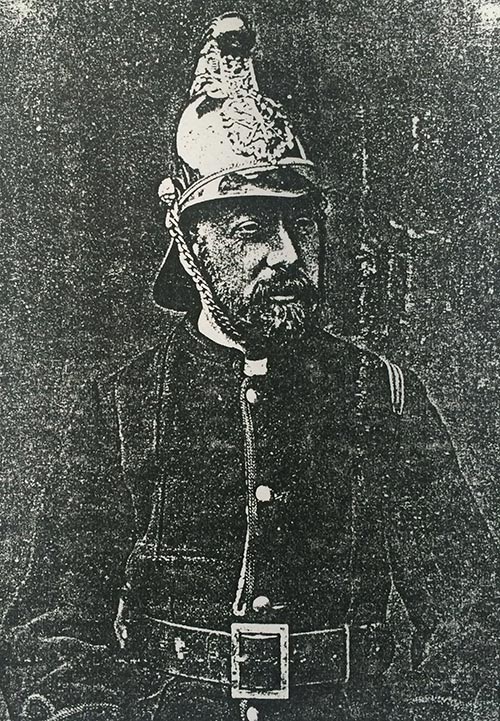
Easily on hand for the Old Fire Station.
|
|
1897
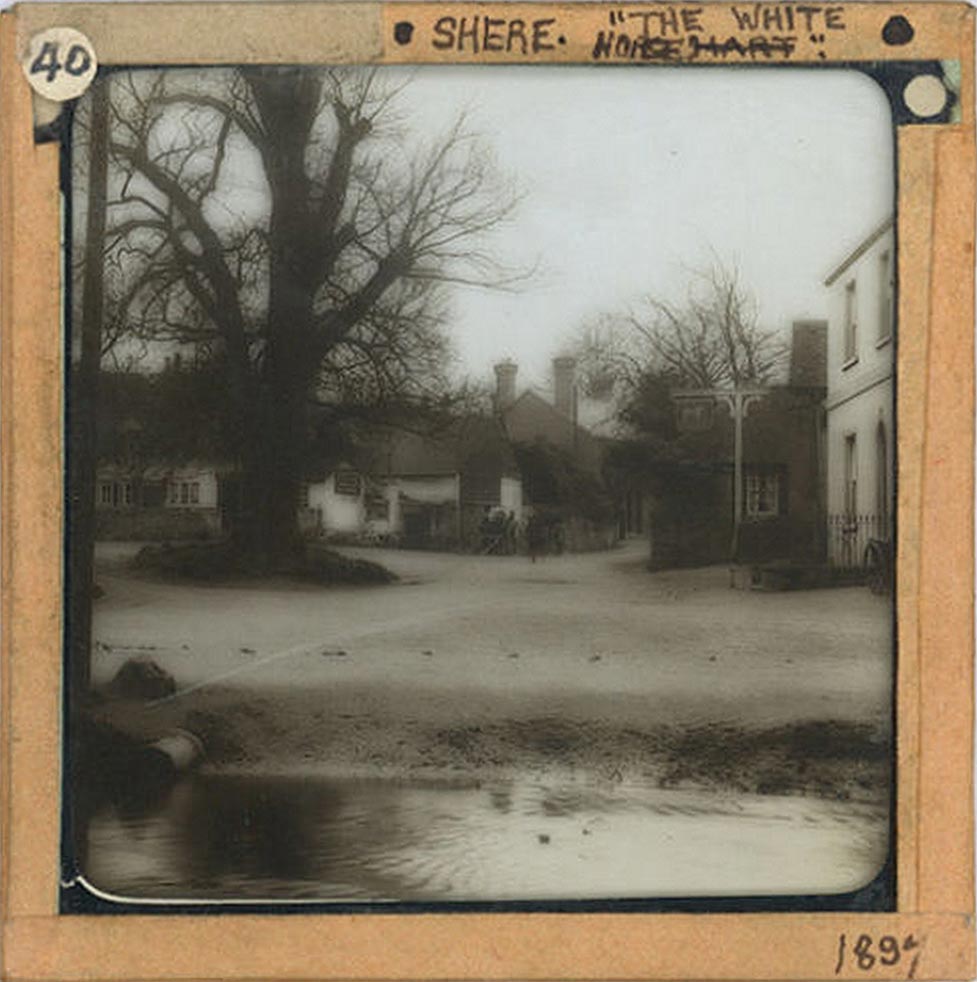
Following on from the posting of 14th May, Another 'Lantern Glass Slide' has been uncovered - SHERE. "THE WHITE HORSE" - Click on the slide above
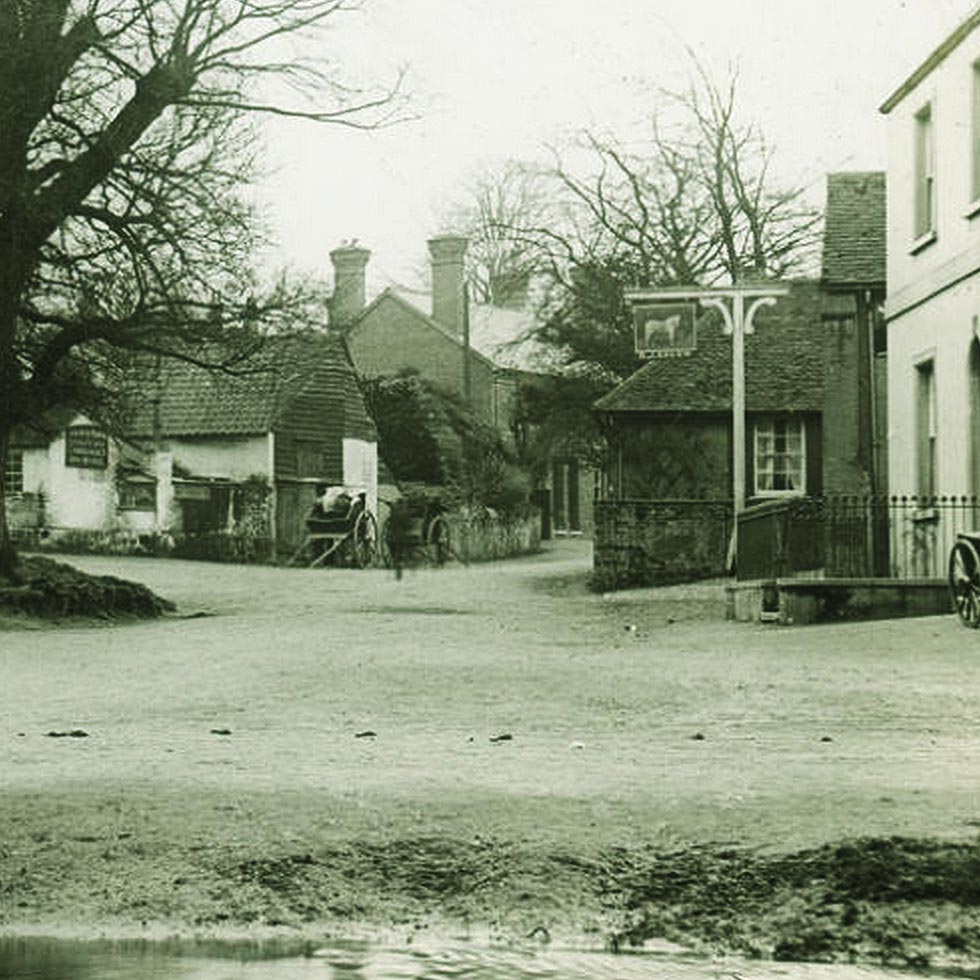
Thanks to Aistair
22nd May 2017
|
1899
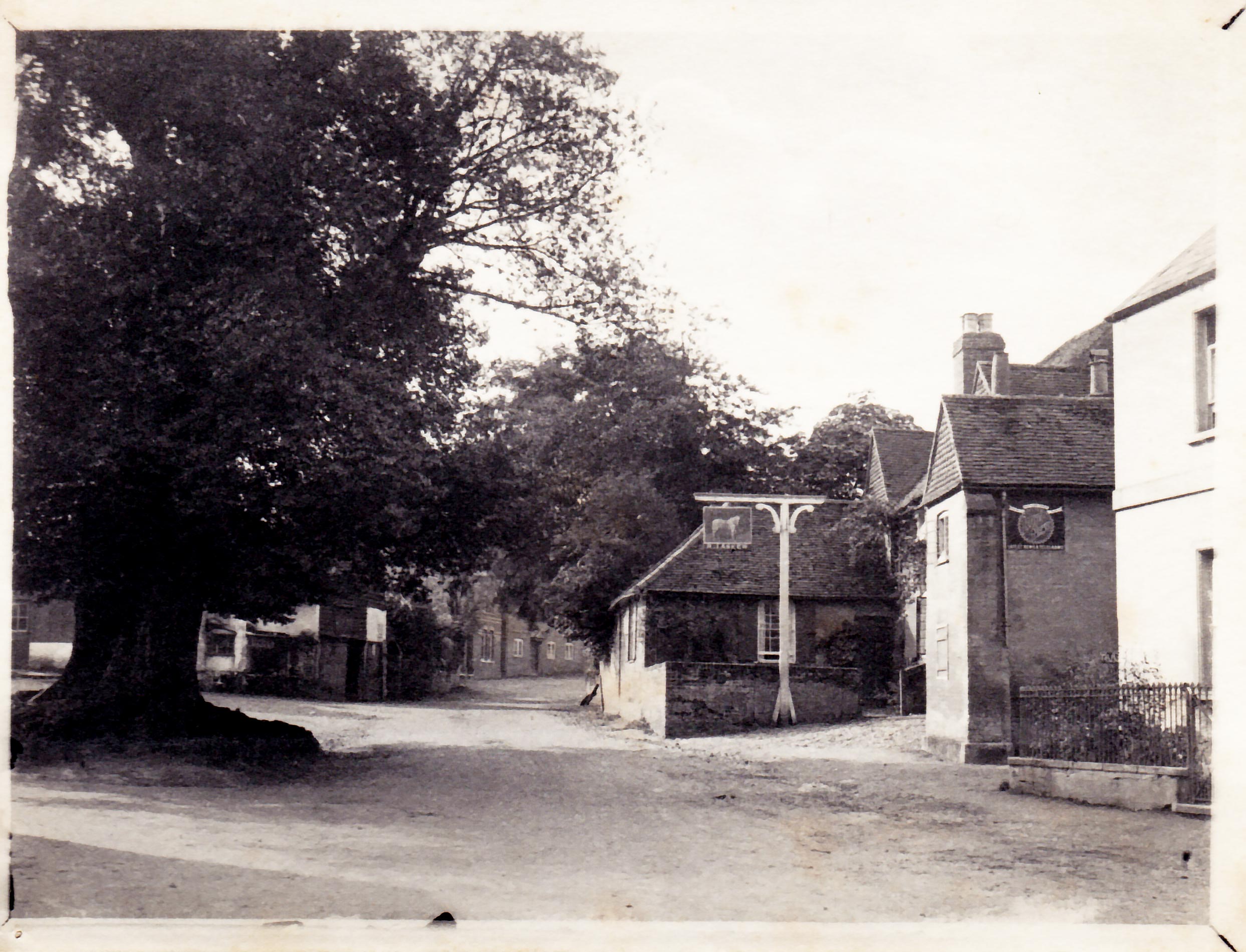
The White Horse Pub looking up towards Shere Lane
|
White Horse Pub, Shere
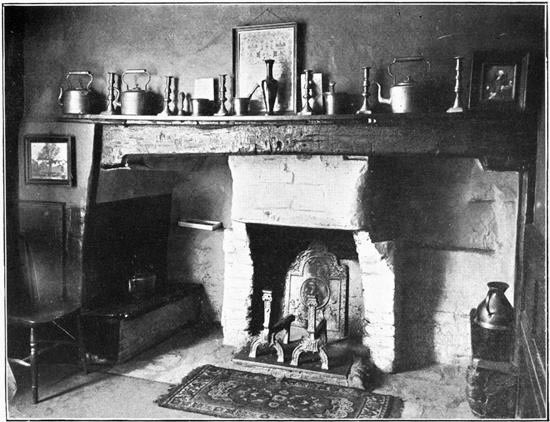
THE INGLE-NOOK, “WHITE HORSE” INN, SHERE.
"One of the finest of these surviving examples is that of the “White Horse” at Shere, an old-world inn in midst of an equally old-world village. Shere is the most picturesque of those rural villages—Wotton, Abinger Hatch, Gomshall, Shere, Albury and Shalford—strung along the road that runs, lovely, under the southern shoulders of the bold South Downs, between Reigate and Guildford. Modern times have passed it by, and the grey Norman church, a huge and ancient tree, and the old “White Horse,” have a very special quiet nook to themselves. One would not like to hazard too close a guess as to the antiquity of the “White Horse,” whose sign is perhaps the only new thing about it—and that is a picturesque acquisition. The inn is, of course, not of the Norman and early English antiquity of the church, but it was built, let us say, “once upon a time”; which sounds vaguely impressive, and in doing so begins to do justice to the old-world air of the inn. The fine ingle-nook pictured here is to be found in the parlour, and is furnished, as usual in such hospitable contrivances, with a seat on either side and recesses for mugs and glasses. A fine array of copper kettles and brass pots, candlesticks and apothecaries’ mortars, together with an old sampler, runs along the wide beam, and on the hearth are a beautiful pair of fire-dogs and an elaborate cast-iron fireback"
Taken from The Old Inns of Old England
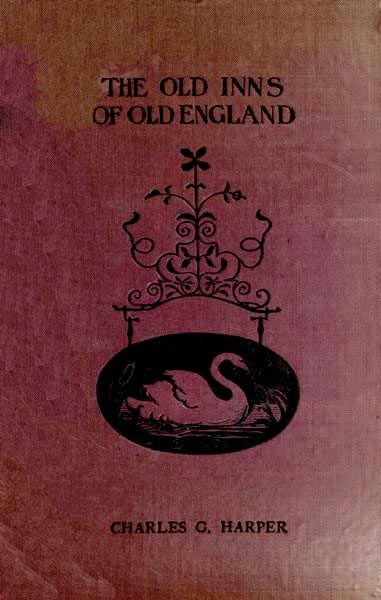
The White Horse Pub
The Project Gutenberg EBook of The Old Inns of Old England,
Volume II (of 2), by Charles G. Harper.
Title: The Old Inns of Old England, Volume II (of 2)
A Picturesque Account of the Ancient and Storied Hostelries of Our Own Country
Author: Charles G. Harper Illustrator: Charles G. Harper
SOURCE |
1901
In Shere, as in Guildford, the time came when the Sheep wool trade passed away. In later years the village could boast of a small market, and resi- dents still living can recall the days when, as a relic of market-day customs, the farmers would meet at the White Horse once a week to learn the news from the weekly paper. Less than a century ago smuggling and sheep-stealing were not unknown in the district. London Lane which starts almost from the centre of the village to climb the steep face of the Downs was just the type of unfrequented bypath which best served the purpose of the illegitimate trader, whose pack-horse, with his burden of contraband goods, stealthily made his way from the coast over the South Downs and through the forest. Mr. Askew, well informed as he is in all that relates to Shere's past, can throw no light upon the history of the exceptionally capacious cellars of his interesting old house, the White Horse.
READ MORE ABOUT MAURICE ASKEW
|
New Pub Sign
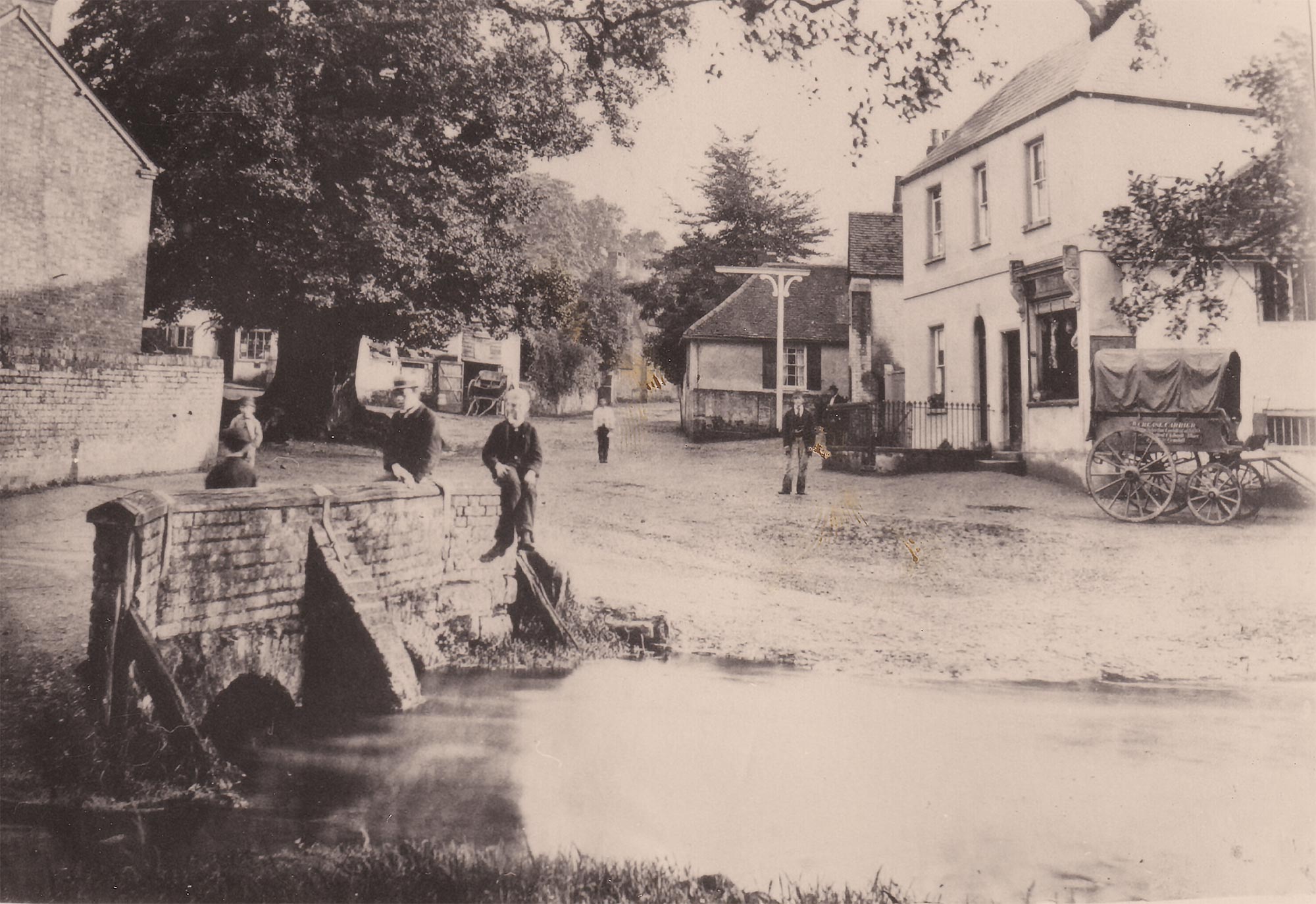
Note the missing 'White Horse' sign, absent from the wooden structure. Is this in ready for the new sign - see photo below:
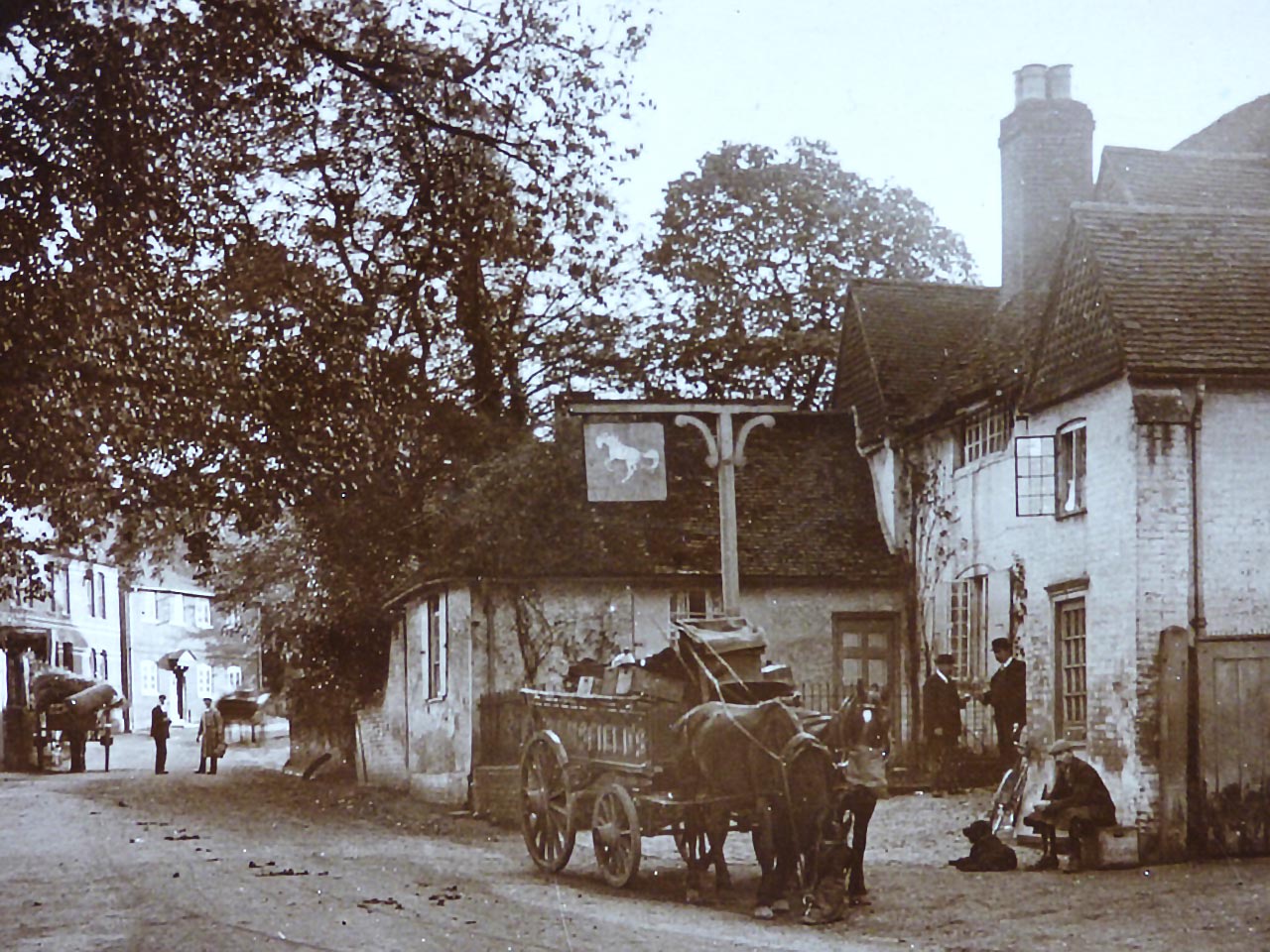 Note the 'New White Horse' sign and positioned so that it is facing outwards - Approx 1904 Note the 'New White Horse' sign and positioned so that it is facing outwards - Approx 1904
|
1905
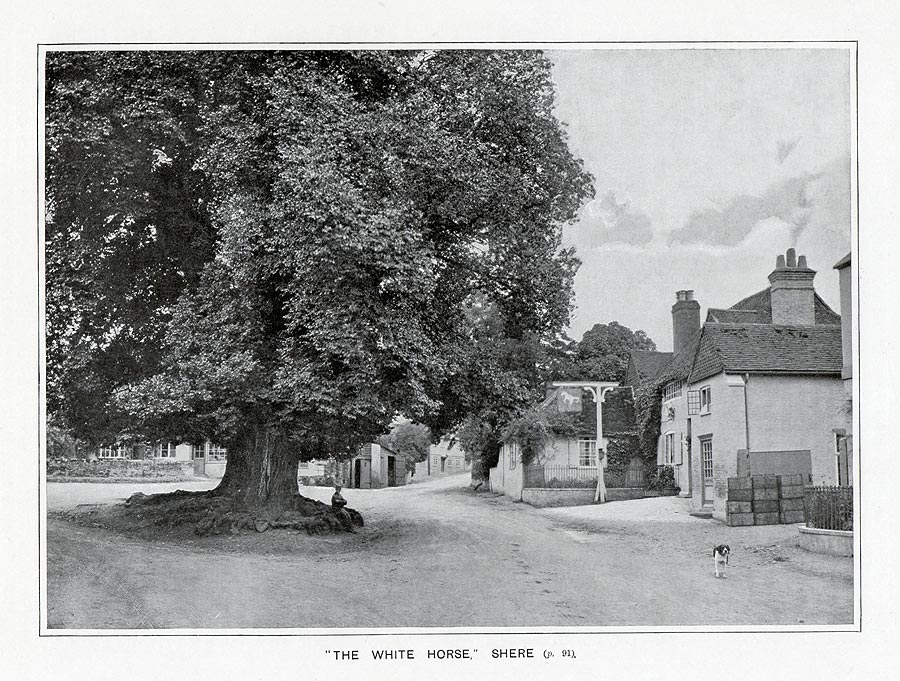
|
|
1909
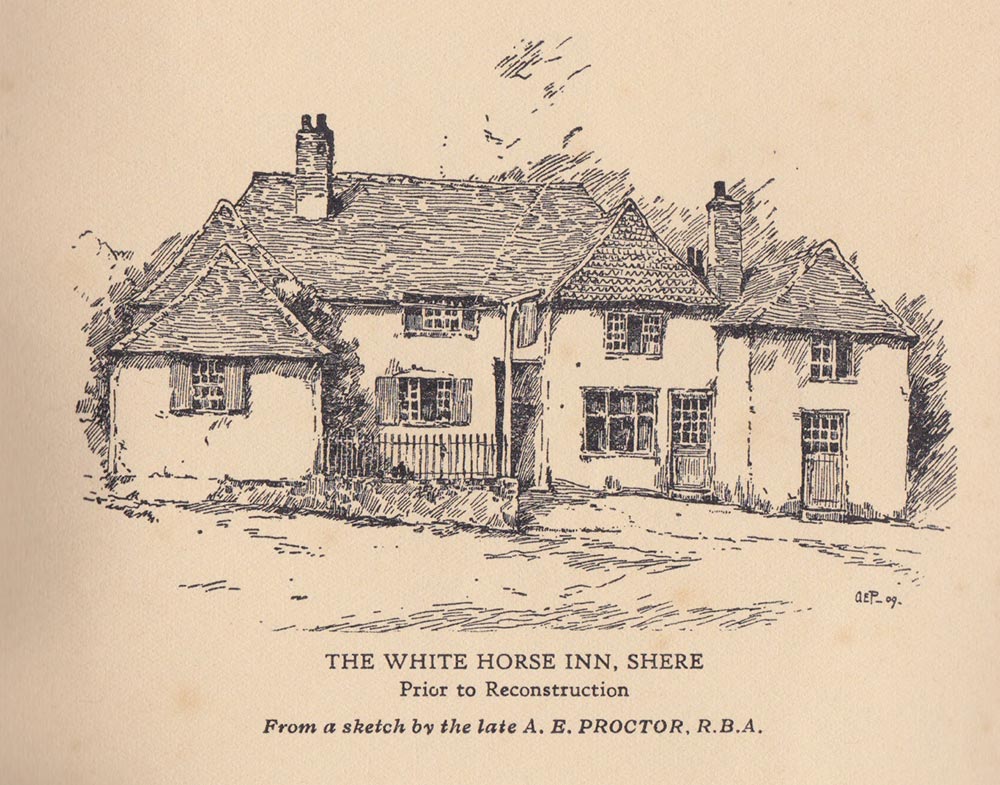
The White Horse Inn Shere, Shere
Illustrator: A. E. Proctor

Taken from "Walks & Talks about Shere by R. J. Askew
(paperback version)
|
July 1910
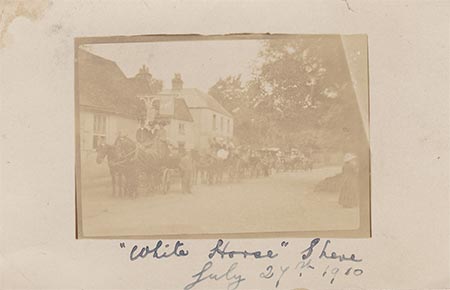
This faded, yet real photo postcard with ink penned "White Horse" with Shere July 27th 1910. I am not at all sure what the celebration was, or why that day was so special, but I have enhanced the image in the hope that someone may be able to shed some light:
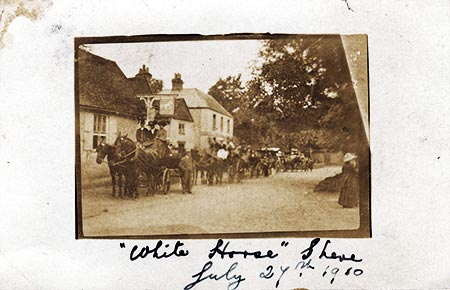
VIEW larger image
Here is the rear of the postcard for anyone interested, posted on August 12th 1910:

click for larger image
|
1911
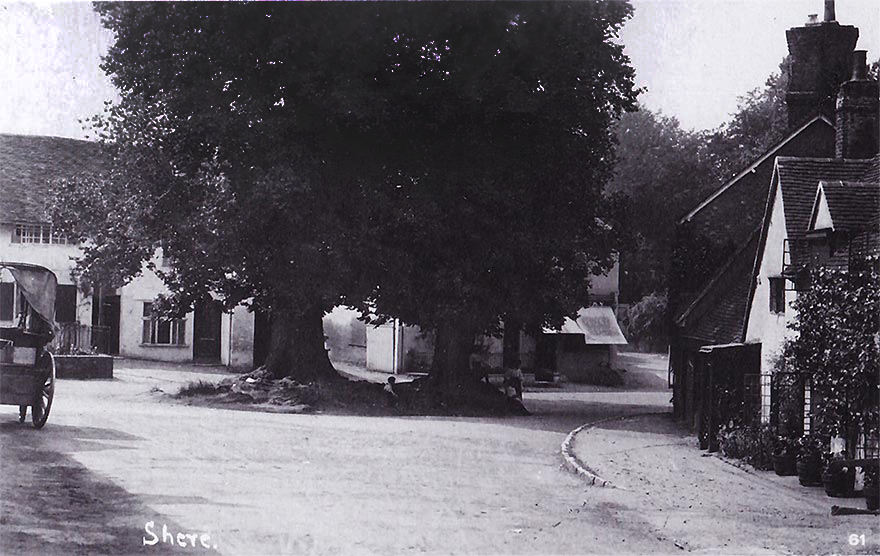
The Square, Shere - Surrey
|
During or shortly after WW1
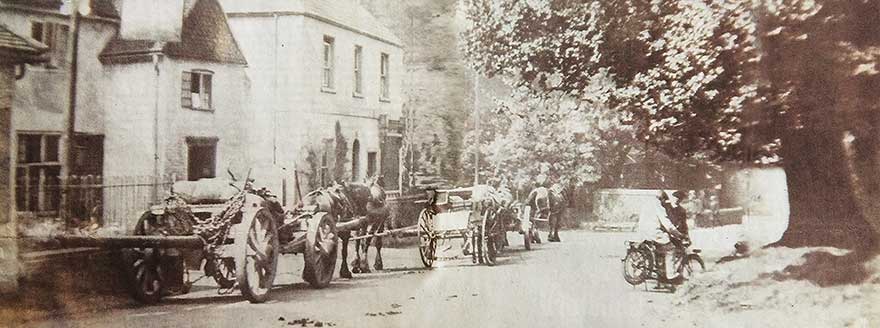
The White Horse with the First World War guns
This image appeared in an article over 100 years later in the Surrey Ad 'From the archives' (9th Sept 2011) - view the article below in the 2011 section. VIEW AREA ON LEFT | VIEW AREA ON RIGHT
VIEW larger image
|
1918
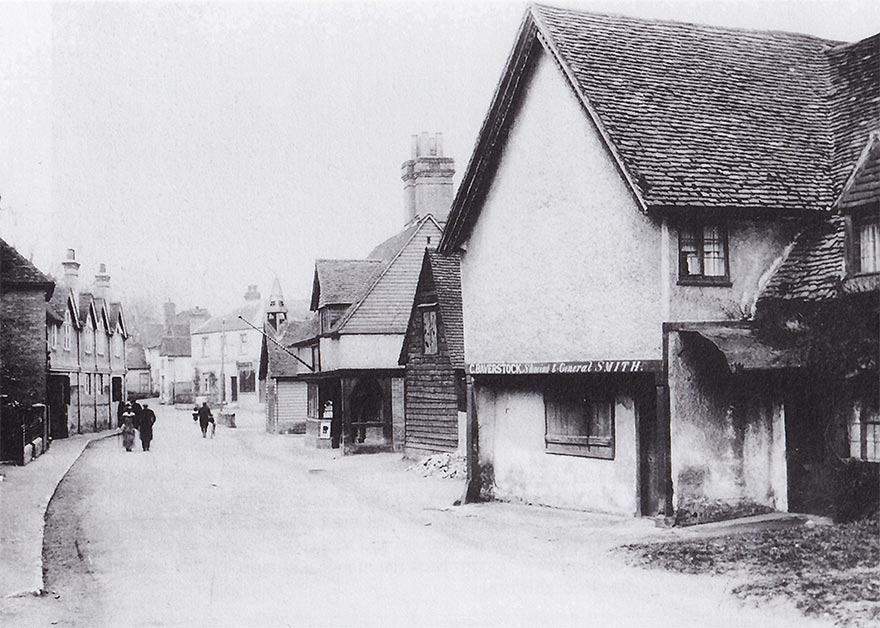
View down Middle Street - You can see The White Horse at the far end of Middle Street.
|
1921
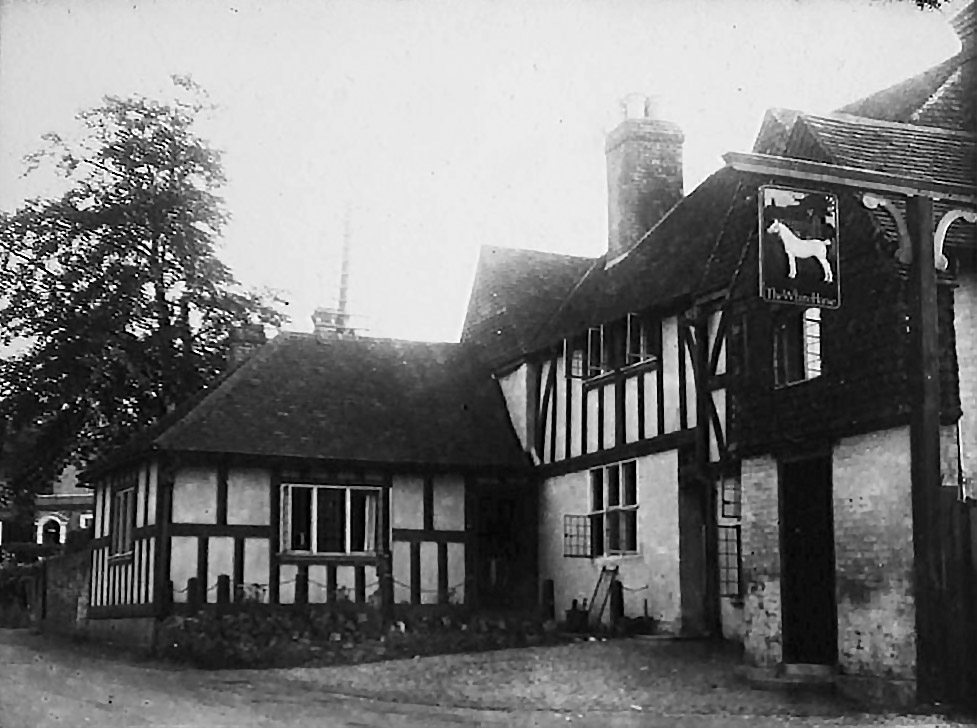
The White Horse with its newly timbered facade and pub sign re-postioned to its new location and new sign. |
1938
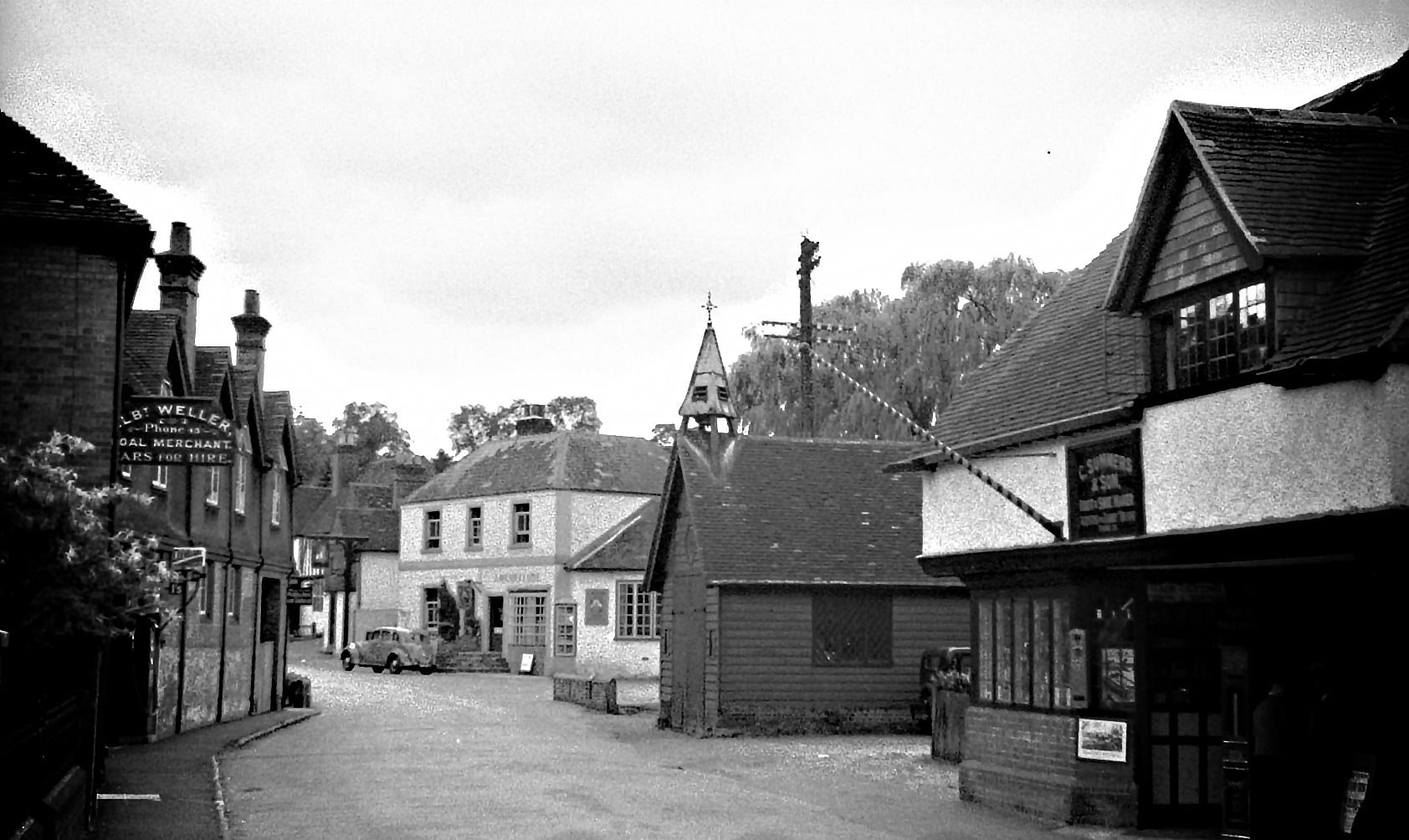
1938 Middle Street with the Old Firestation
C. Summers and Son, barbers on the right
Lavender Lady Tea Rooms just over the bridge with
The White Horse to its left.
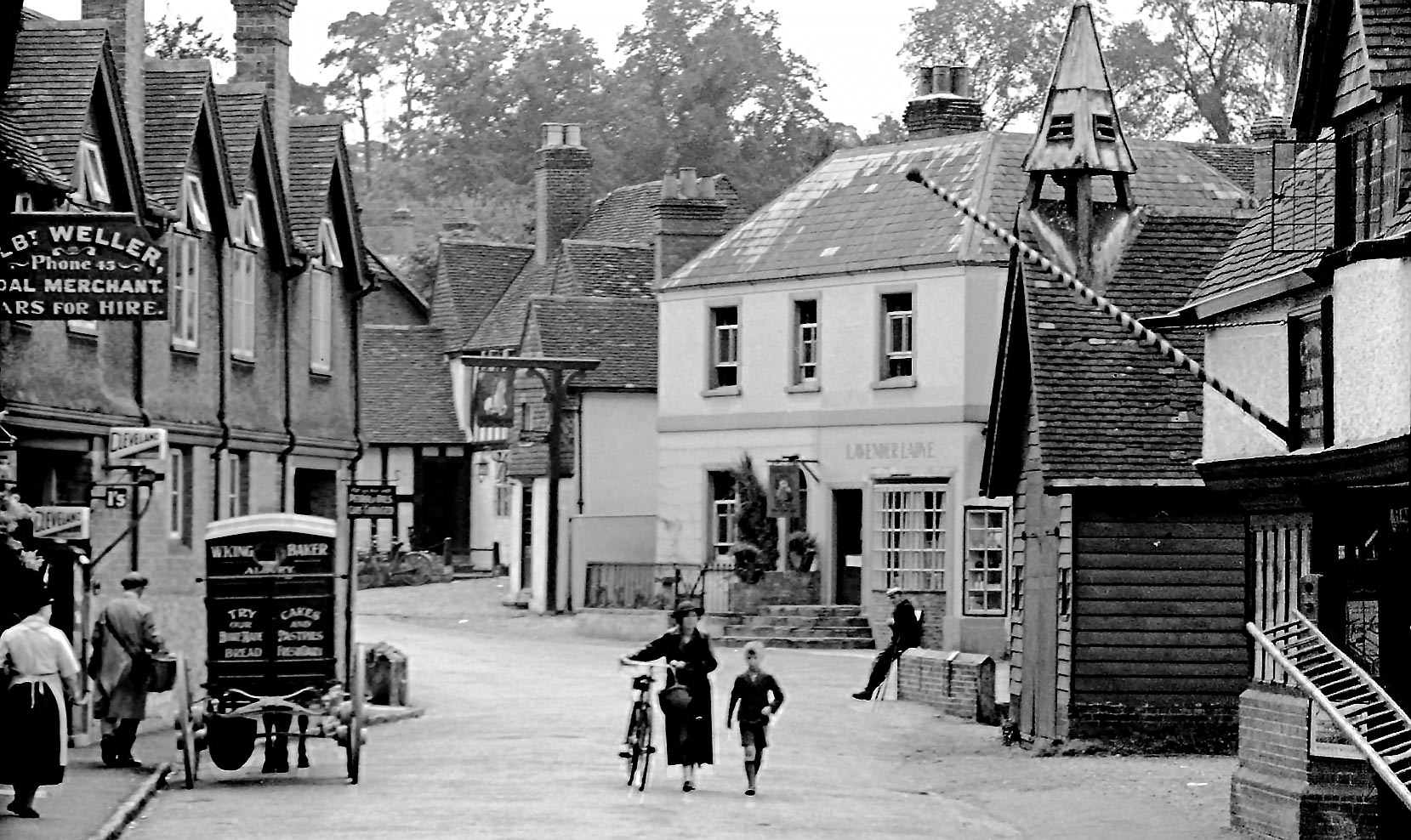
1938 - Middle Street, Shere - Slightly closer shot, showing life in the village - Note the 'Cleveland' petrol pumps on the left and te 'White Horse Inn' sign is different.
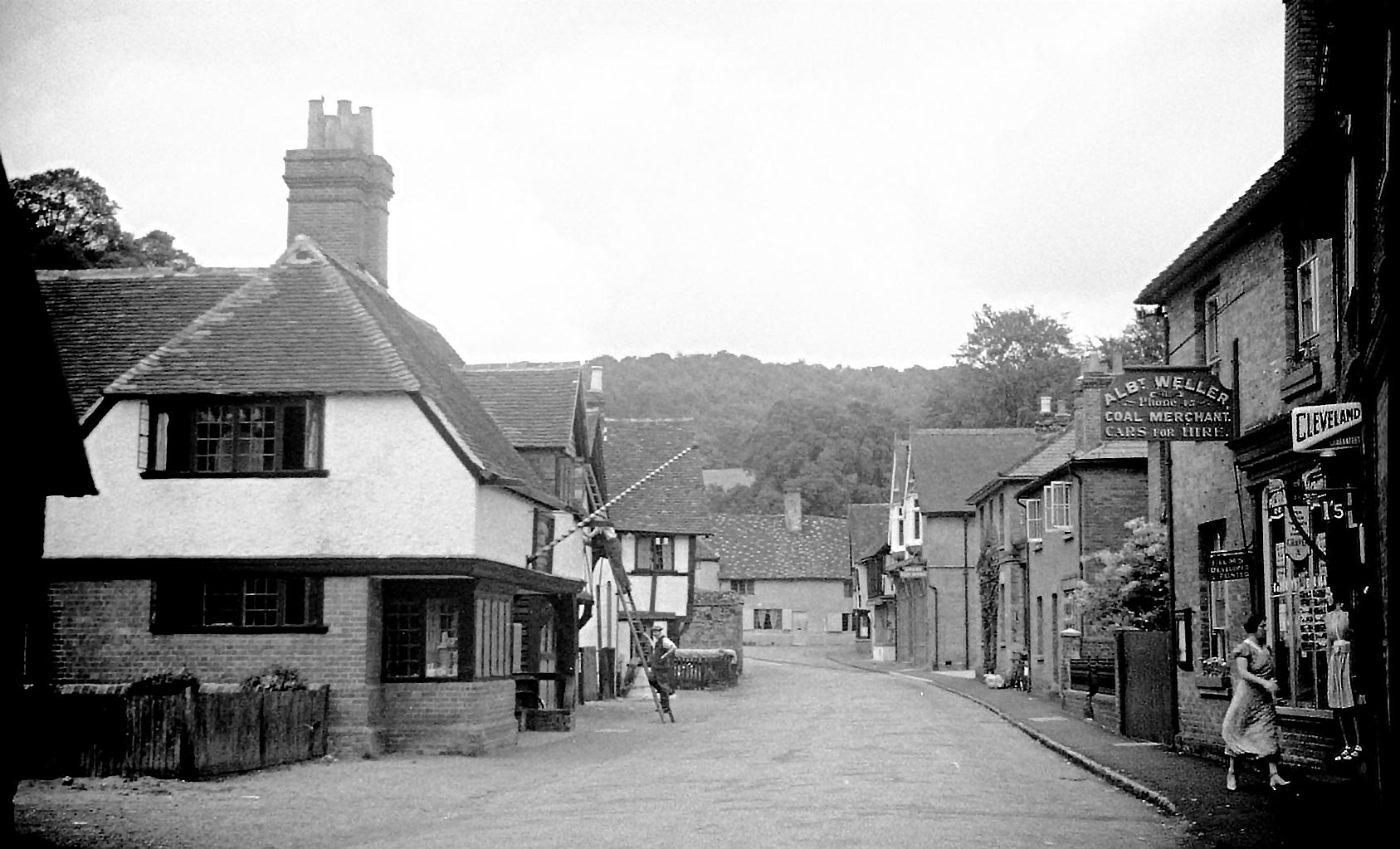
1938 - Looking from the other direction up Middler Street |
1944 - World War II
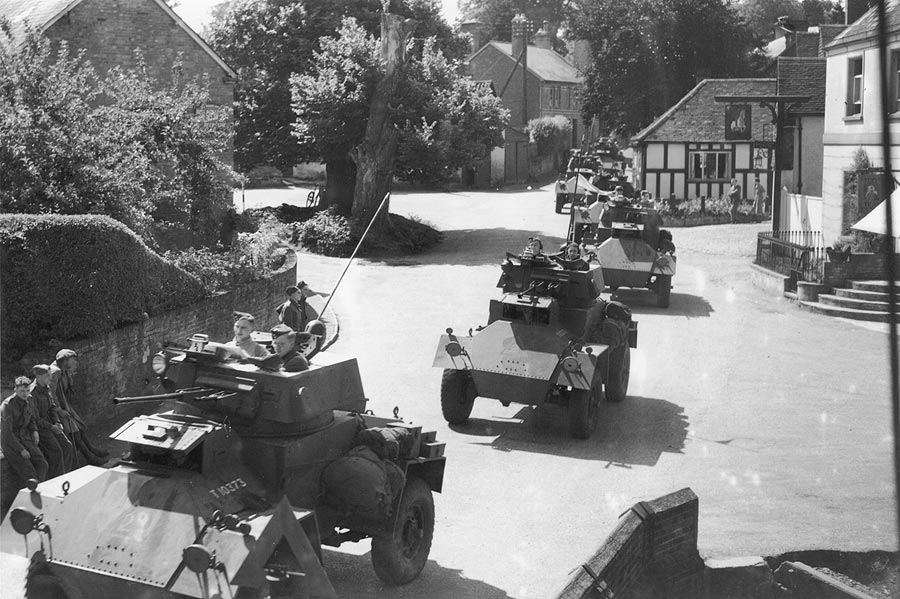
Military vehicles passing through Shere, they may have been from the Worestershire Regiment - 1944 D-day preparations
|
1946 - Film
A Matter of Life and Death
- David Niven

View captured from the film, looking towards the square. Left to right: The White Horse, The Lavender Lady and Lower Street
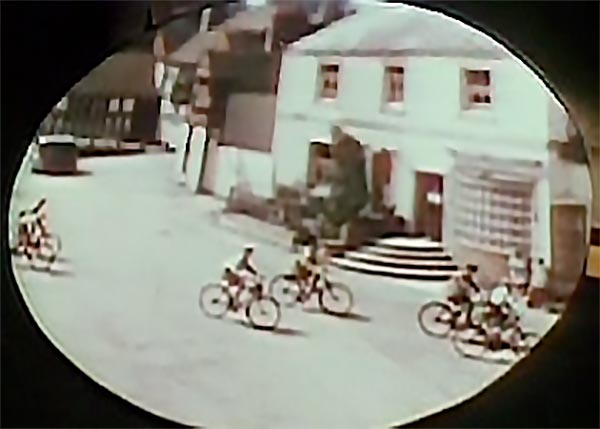
More can be found on the 'FILMS PAGE'
|
| |
1947
The following photo's were taken on 26th October 1947
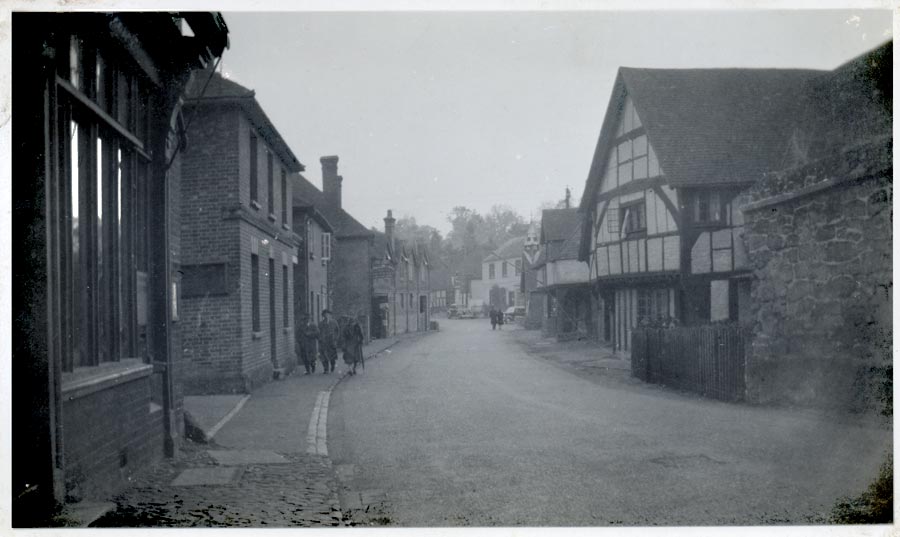
Looking down Middle Street
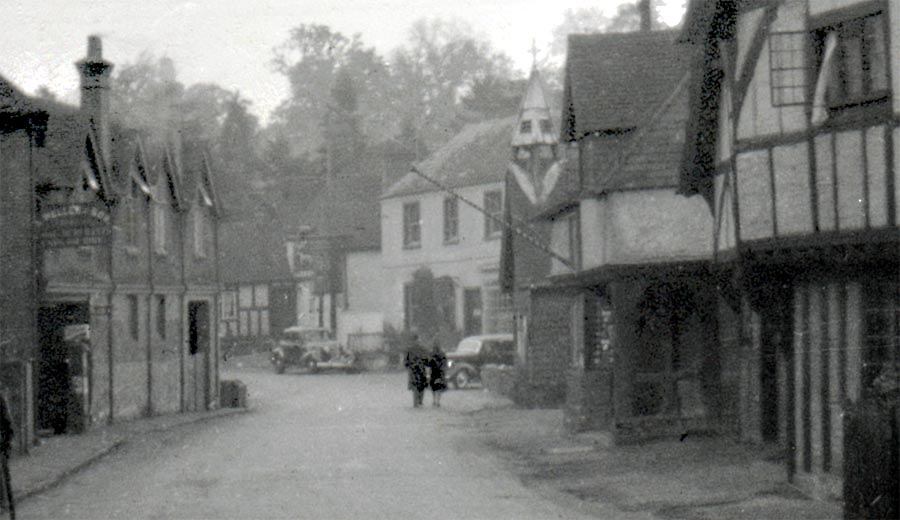
You can just make out the Garage Petrol Pump on the left hand side (Now Beaufield Mews and Treacle)
|
Shere from above - April 1948
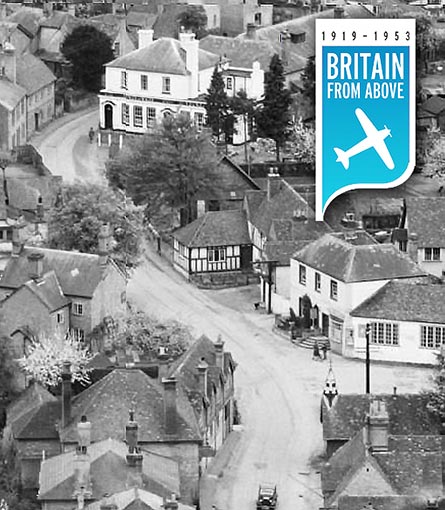
Britain from above
An amazing view of our village just after the second world war in 1948.
A series of five detailed aerial views can be found on the Britain from the website:
Visit the website to view (you have to sign in to access the zoomable maps) - any problems e-mail me
View Full Aerial View
|
1950s

Above photo: Landlord Reg Marshall
One evening in June 2016, Geoff Tanner had been clearing out his sisters house in Upper Street and came across 16 black and white photo's. He walked into the White Horse and handed them over to the present landlord Ben Msalmi. Pub regular, Steve Cook scanned all the images and contacted this Shere Village website.
Special thanks to Steve Cook and Ben Msalmi for letting us all enjoy looking back to the 1950s Shere and the life inside the White Horse Inn.
View ALL images including Reg with a Parrot on his shoulder.
Also featured in the Parish Magazine:
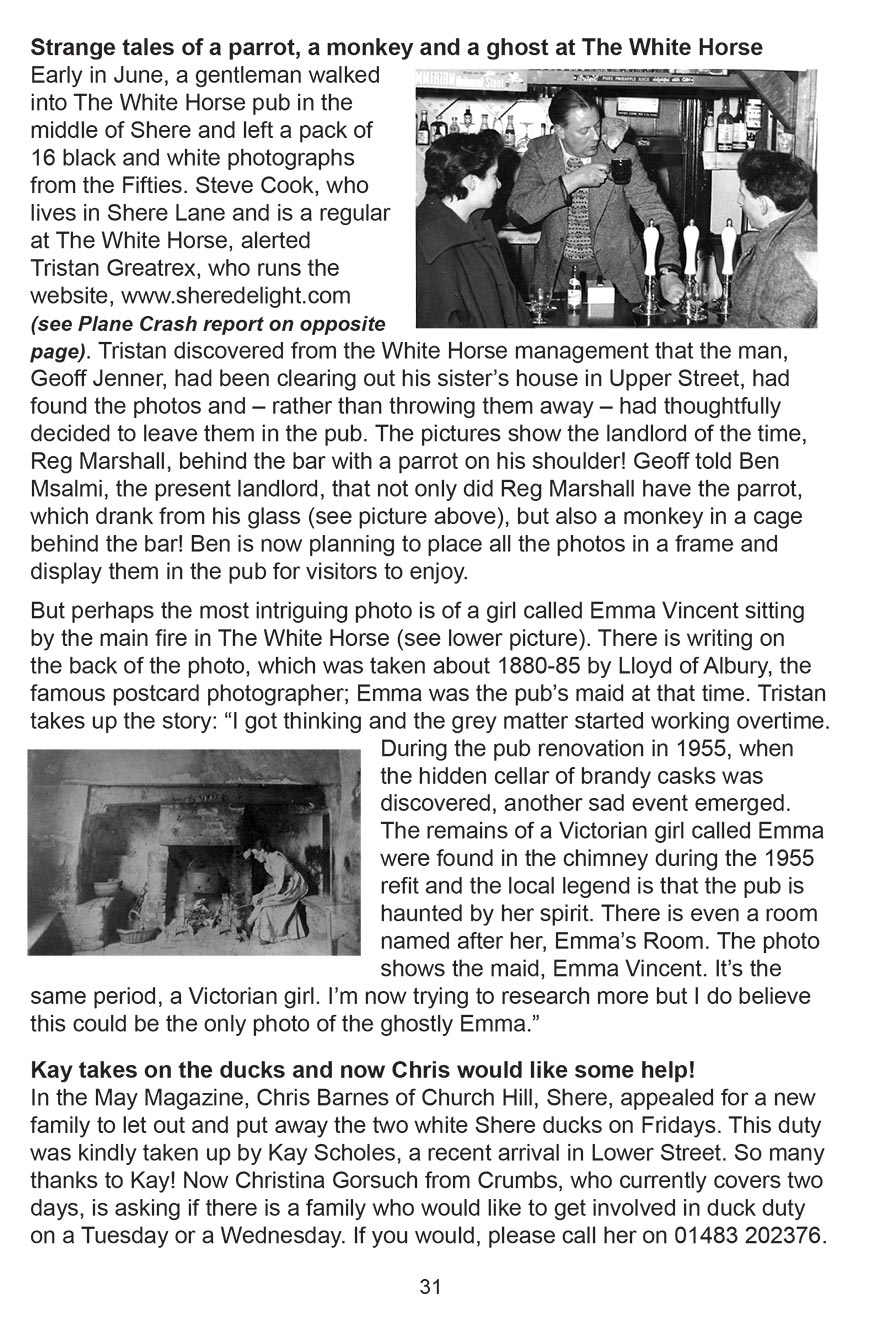
Parish Magazine - page 31, July 2016 Issue
|
1957
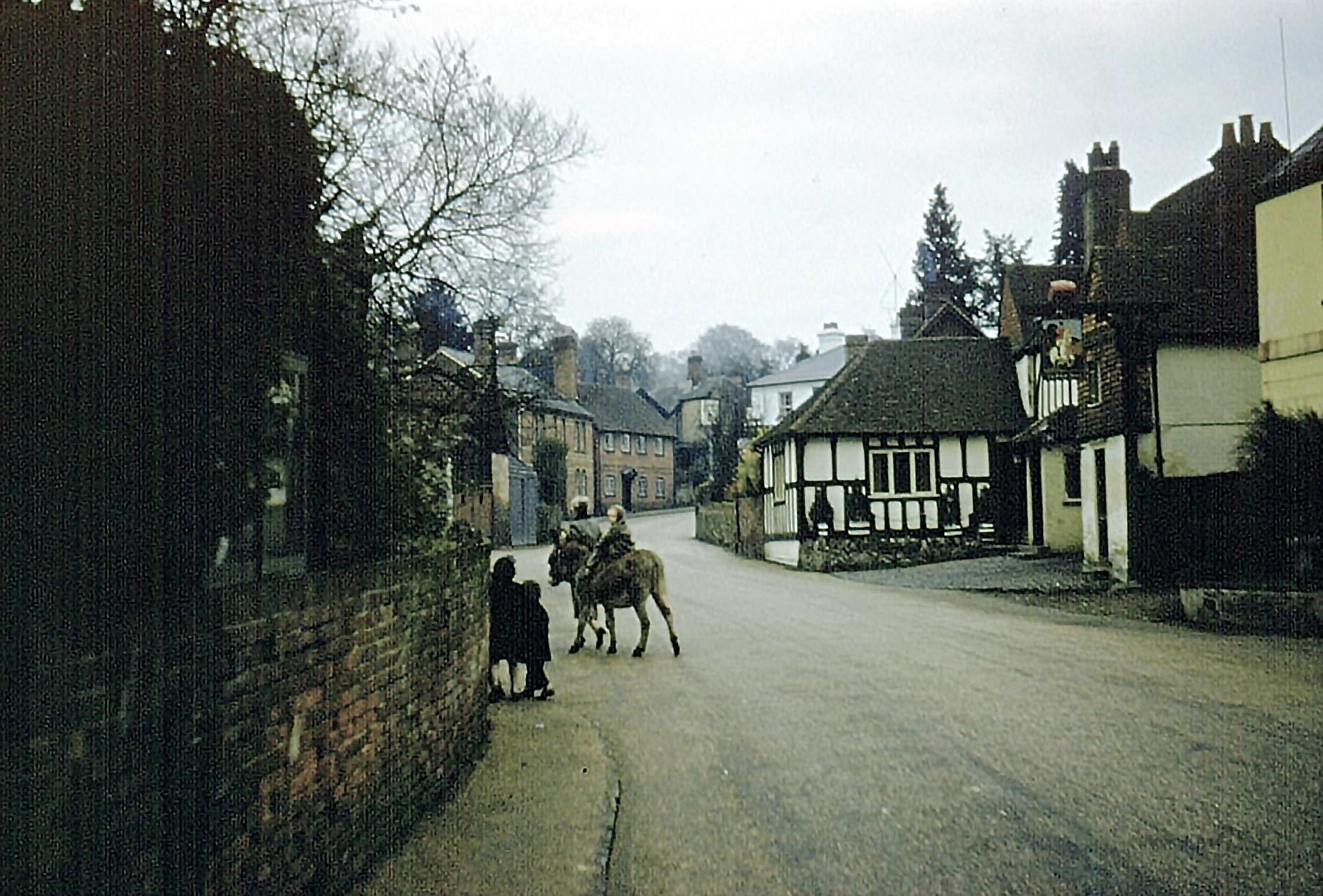
View from the bridge - Looking towards Shere Lane.
photo ©Doveson2002, all rights reserved - Thanks Phil |
|
1963
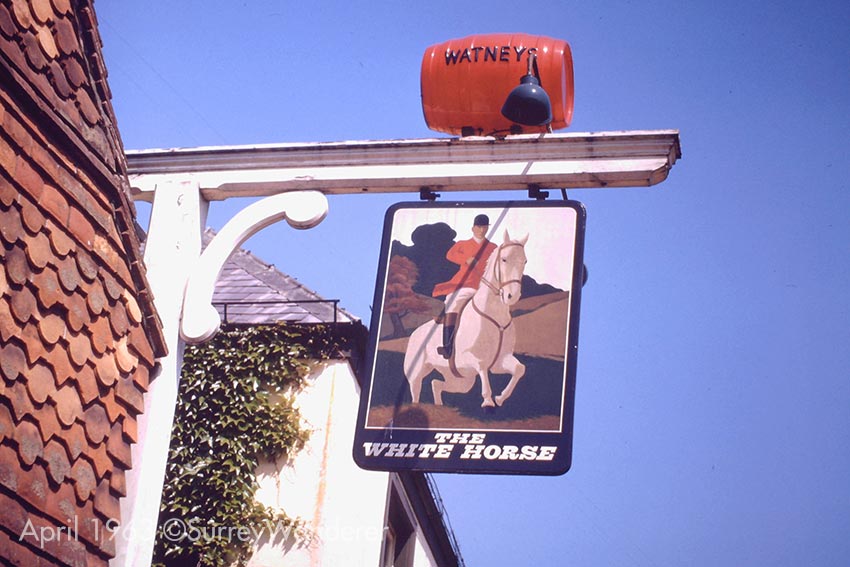
The White Horse, Shere - April 1963
NOTE the change in Pub Sign, six months after the November 1962 photo was taken
photo ©SurreyWanderer, all rights reserved
Many thanks Simon for sharing both photo's
|
1965 Sci-Fi Film
The Earth Dies Screaming
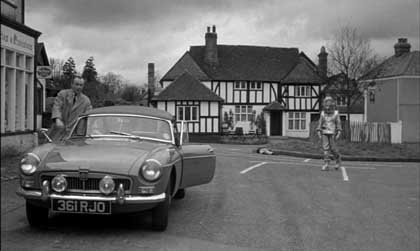
The Square and the White Horse feature heavily in this black and white sci-fi movie.
It was one of several 1960s British horror films to be scored by the avant-garde Elisabeth Lutyens, whose father, Edwin Lutyens, designed the Manor House Lodge in Shere, Cottages in Upper Street and the Lucky Duck Tea Rooms in Middle Street - wikipedia
More can be found on the 'FILMS PAGE'
|
1970s
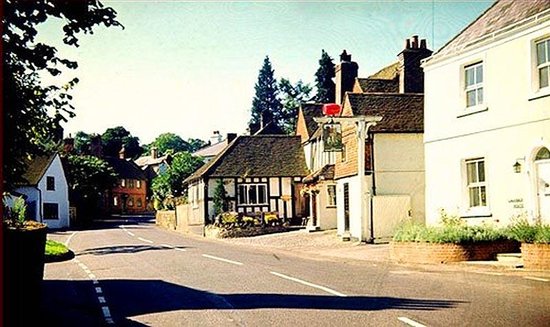
This photo of The White Horse is courtesy of TripAdvisor
Interesting to see the RED WATNEYS barrel above the White Horse
|
1972 - Film
The Ruling Class
- Peter O'Toole & Alistair Sim
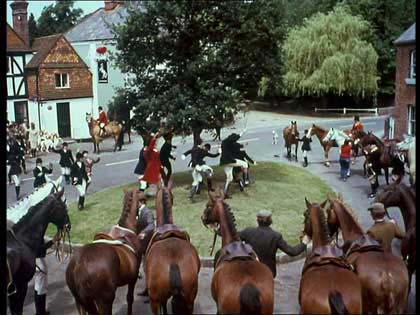
Filmed inside and outside of The White Horse in Shere
More can be found on the 'FILMS PAGE'
|
1983

The White Horse Pub
|
Abt 1980s

This sketch / illustration of the White Horse - Unsure as to the date but can see that this was created by Francis Dowden and the same Pub sign and benches match the above photograph - would love to hear if anyone can date this or tell me more about Francis.
View LARGER image |
|
1985 - Hollywood Film
Reunion at Fairborough
- Robert Mitchum & Deborah Kerr
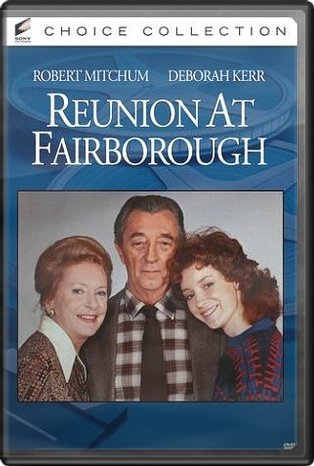
Partly filmed around The White Horse in Shere
More can be found on the 'FILMS PAGE'
|
tr>
1996 - June
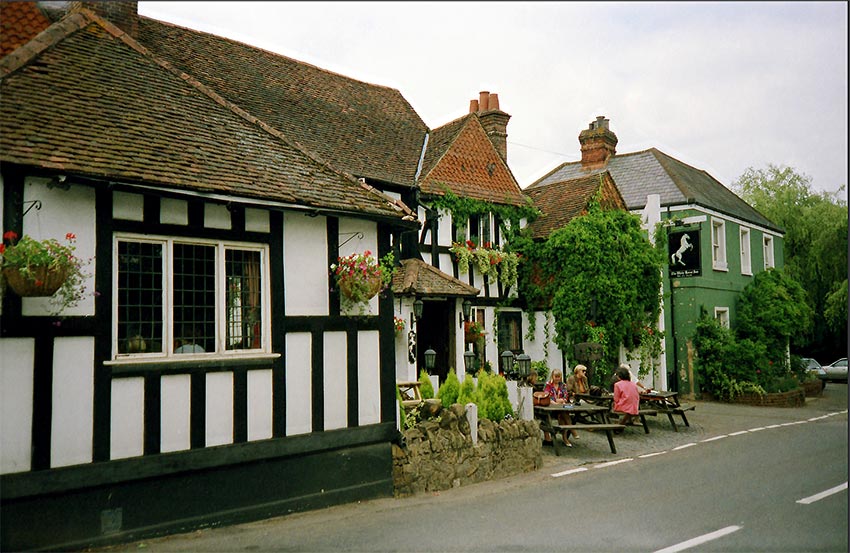
June 1996 - White Horse Pub
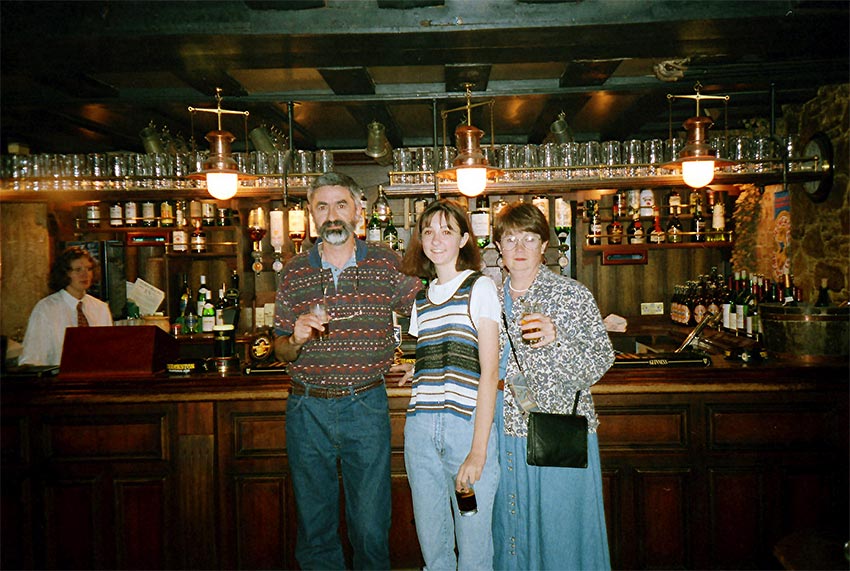
June 1996 - Interior of the White Horse - Walt and family in the bar area
All ten '1996 photos' above © Copyright Walter Etten - thanks Walt.
|
|
|
2010

Bar area
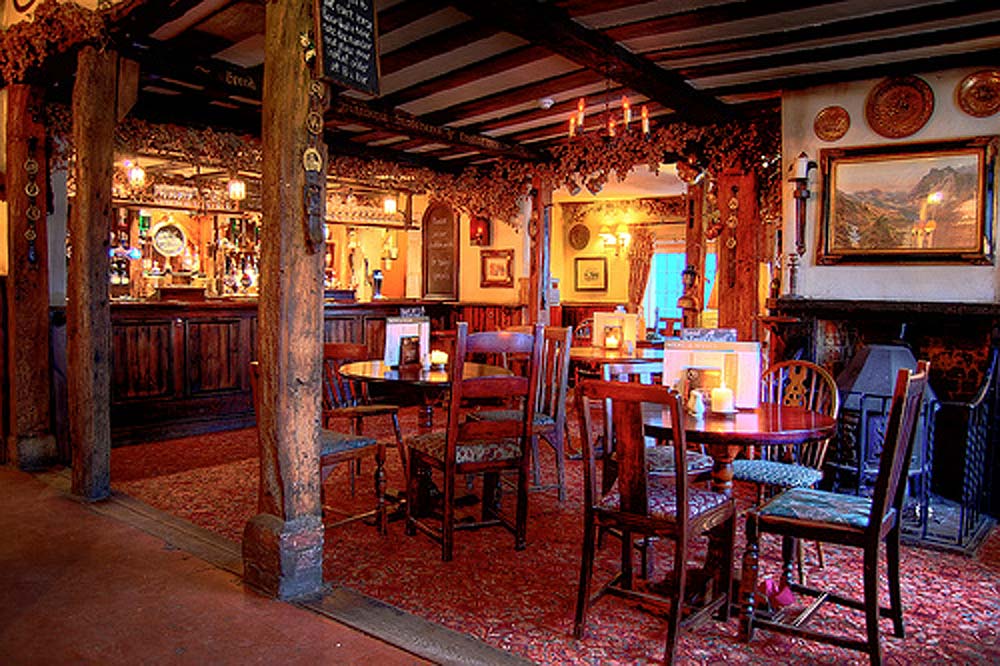
White Horse - Main Bar area - Pre-Major refurbishment in November 2011
©2010 - Photo Copyright
|
2011

White Horse - 9th September 2011 - Surrey Ad. article
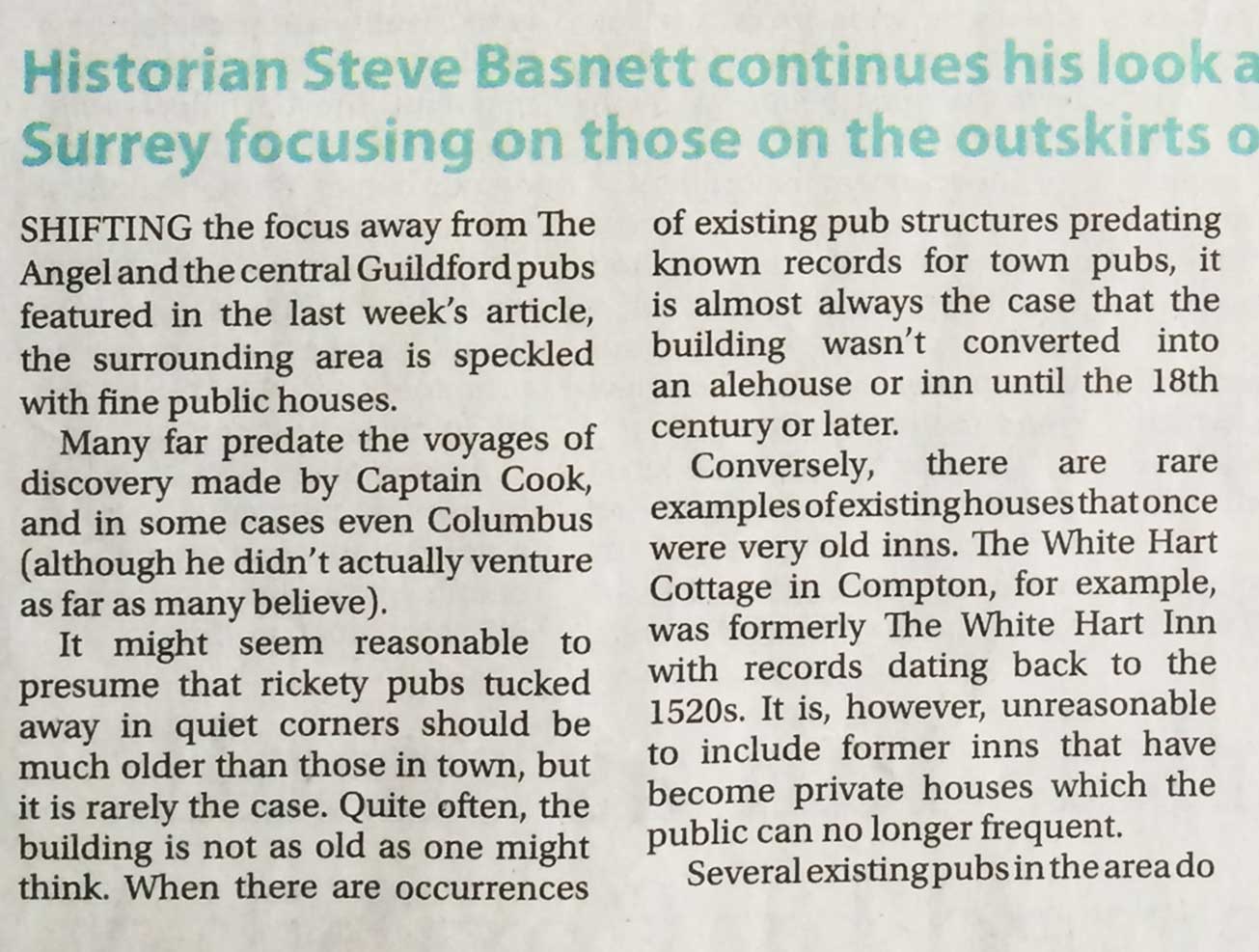
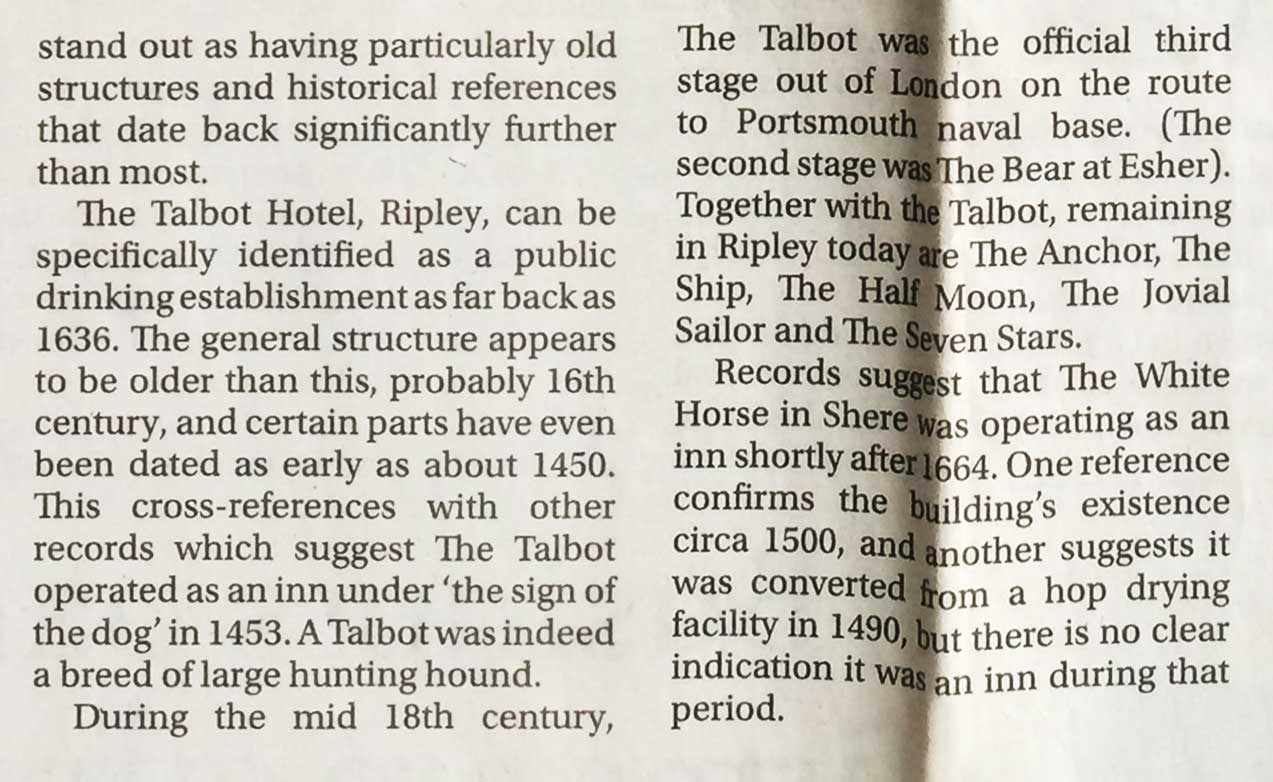
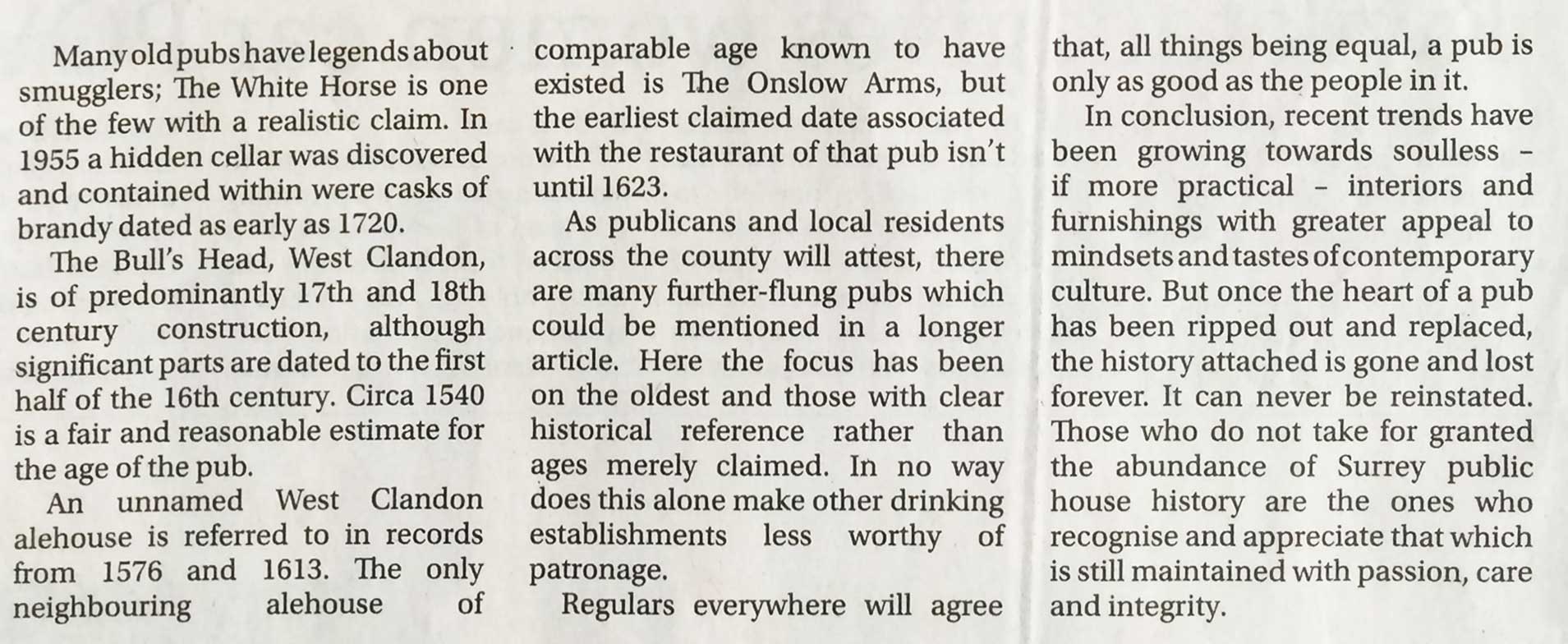
|
2011 - The exterior at night

White Horse at Night - December 2011
© Tristan 2011
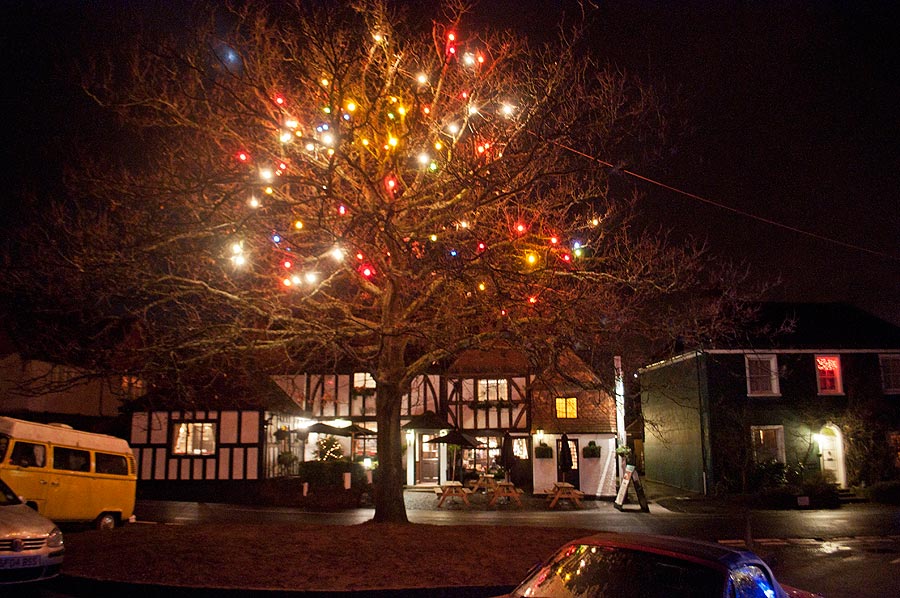
White Horse at Night - December 2011
photo ©2011 - Tristan
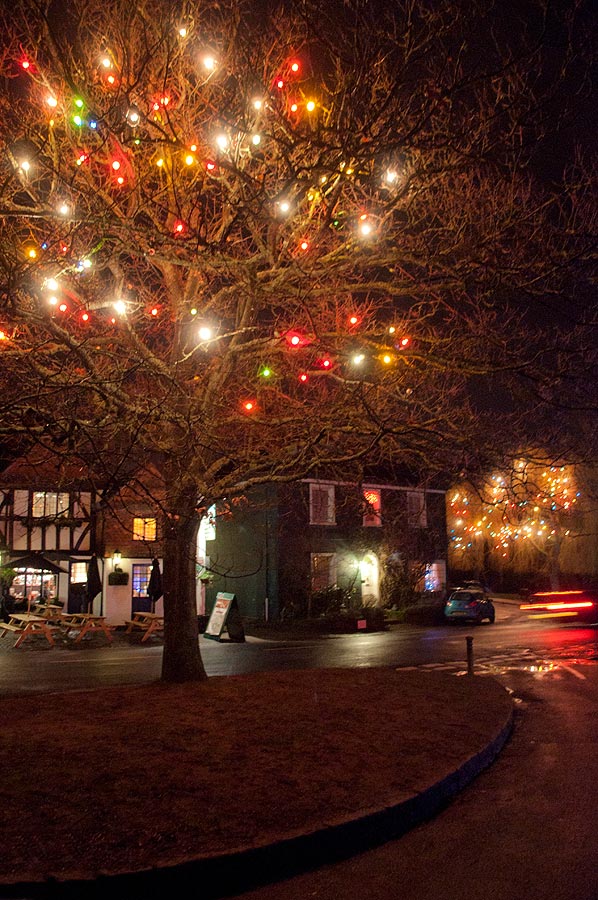
White Horse looking towards Lower Street from The Square
photo ©2011 - Tristan
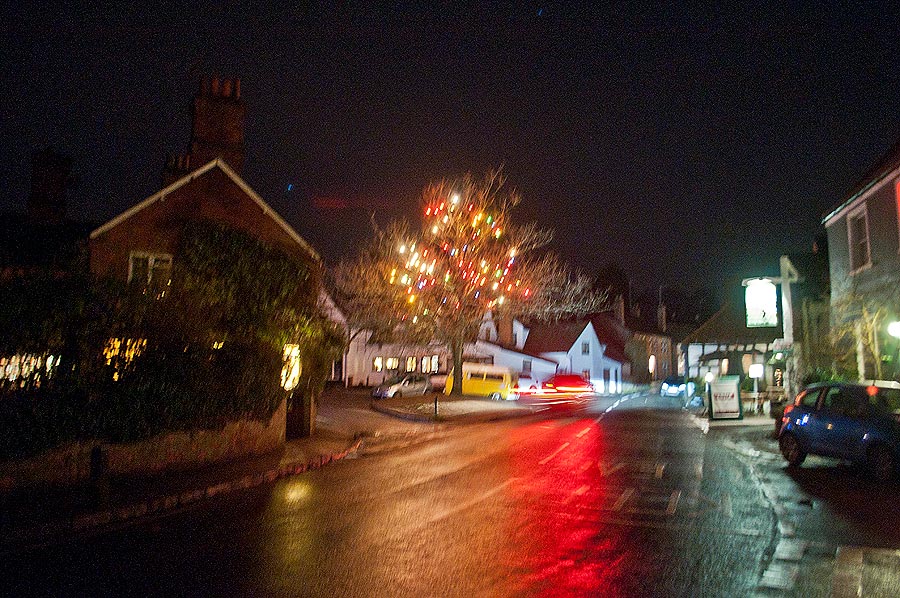
Looking back up towards The Square - December 2011
photo ©2011 - Tristan
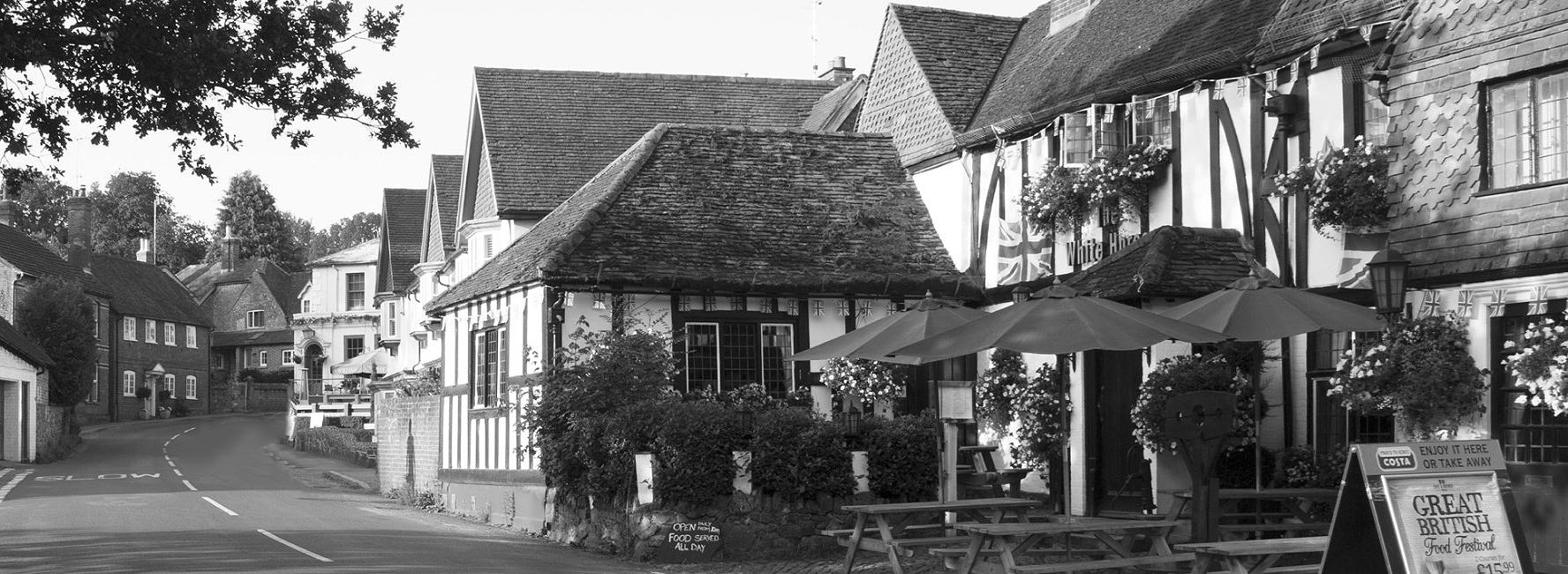
The White Horse - © photo
|
2012

The chalk board to the left of the bar |
January 2013 - Shere in the Snow
Includes exterior shots of the White Horse
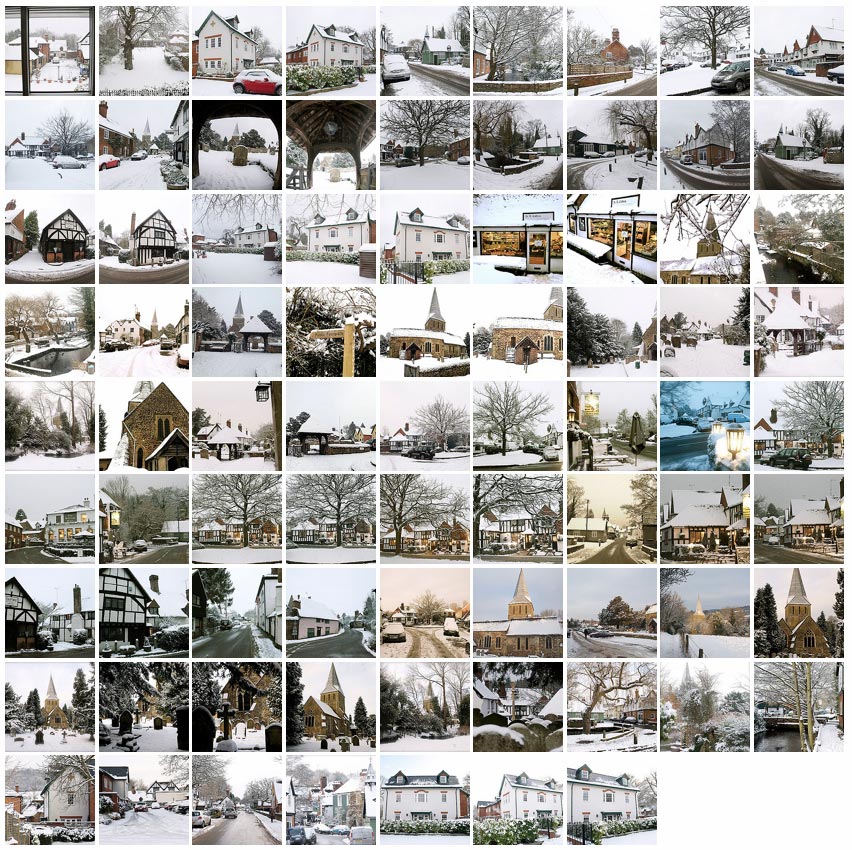
View Photos
Photos copyright Tristan Greatrex |
July 2012 - Interior photos
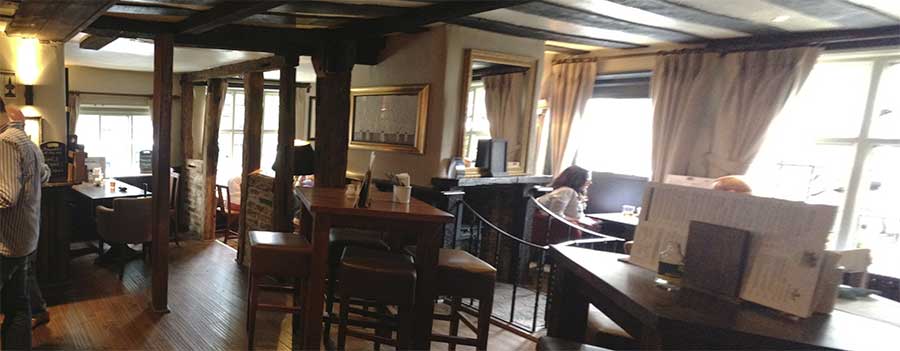
Main bar area - July 2012
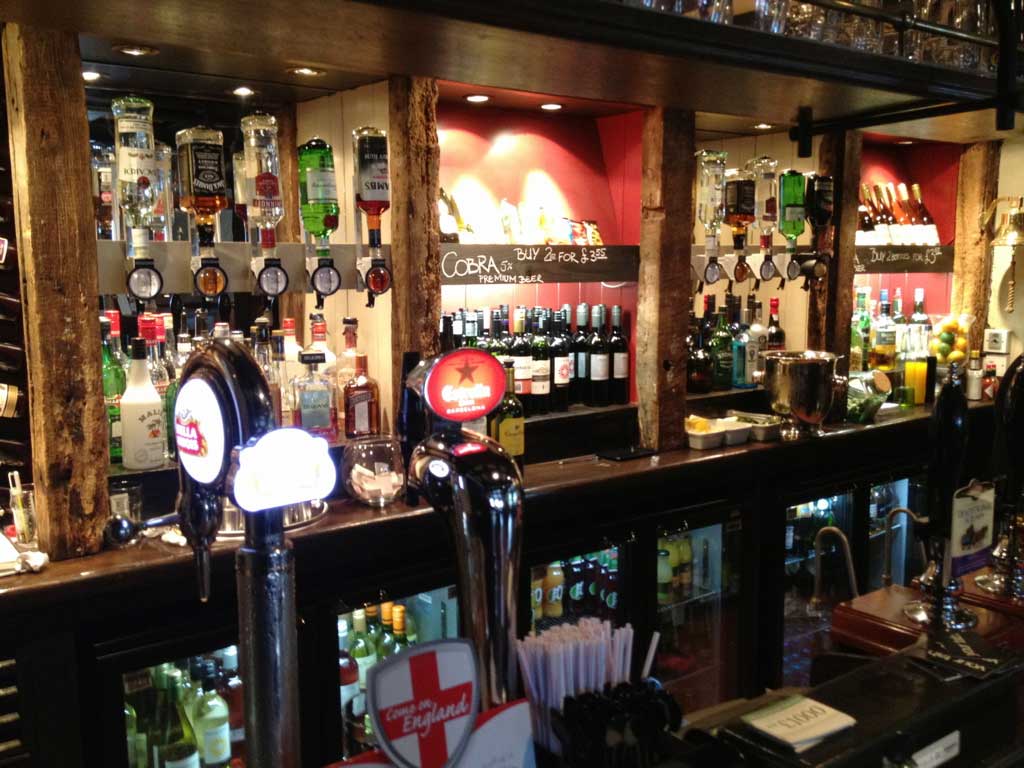
Behind the bar
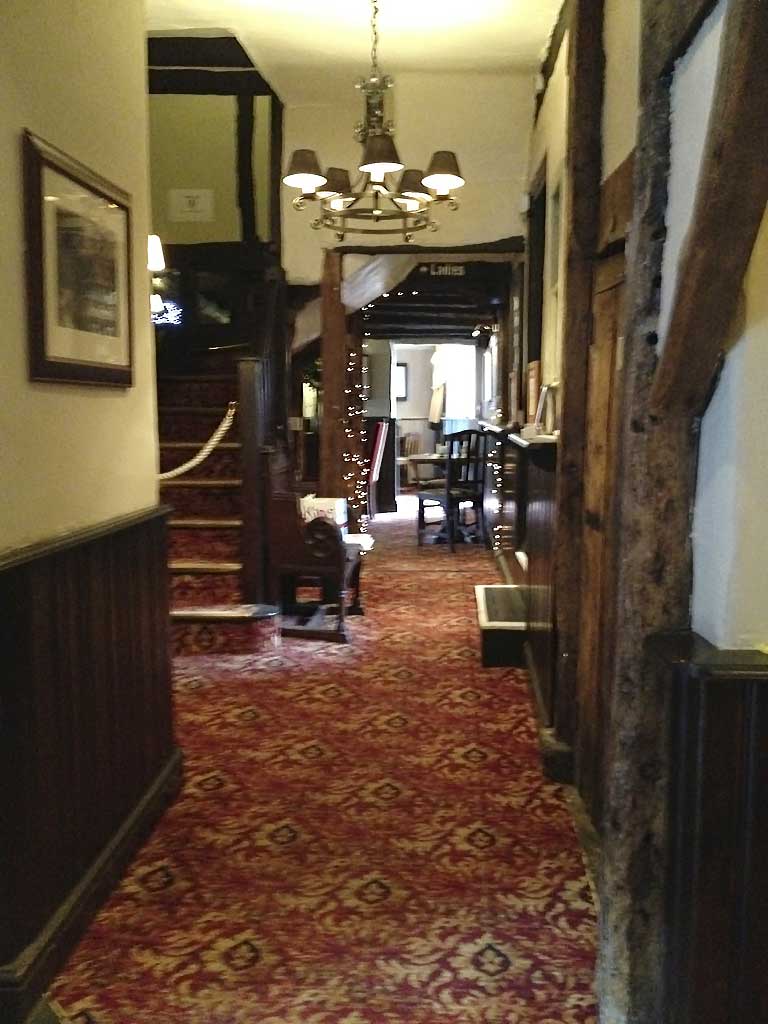
Leading to the Dining room
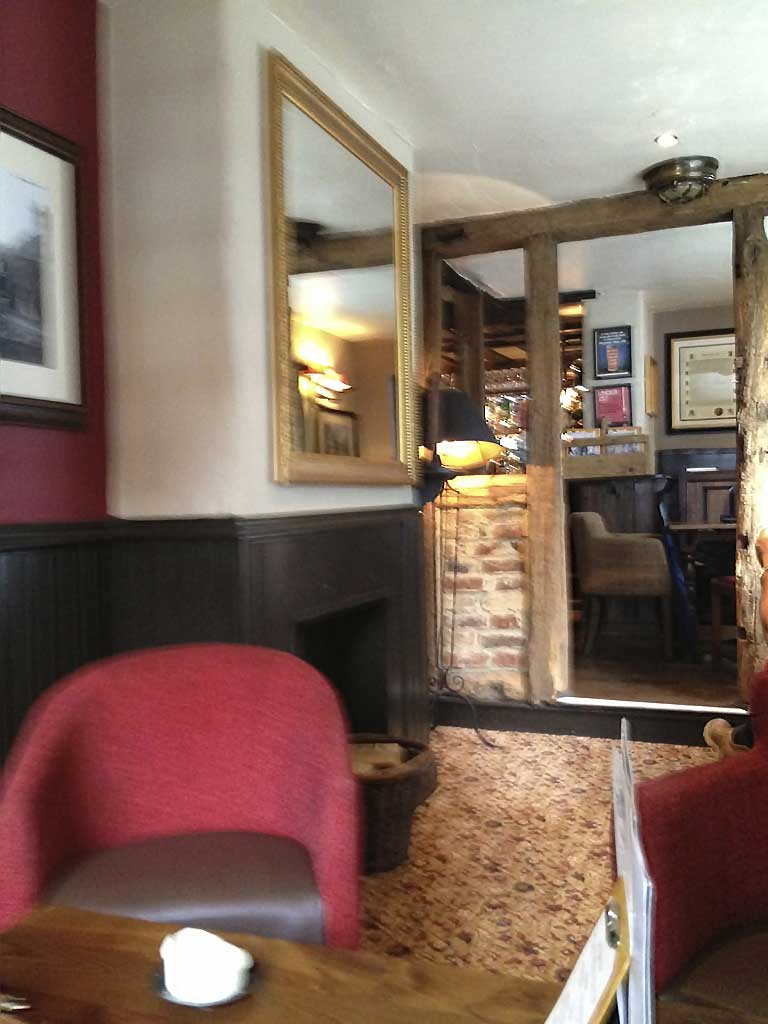
|
|
January 2013
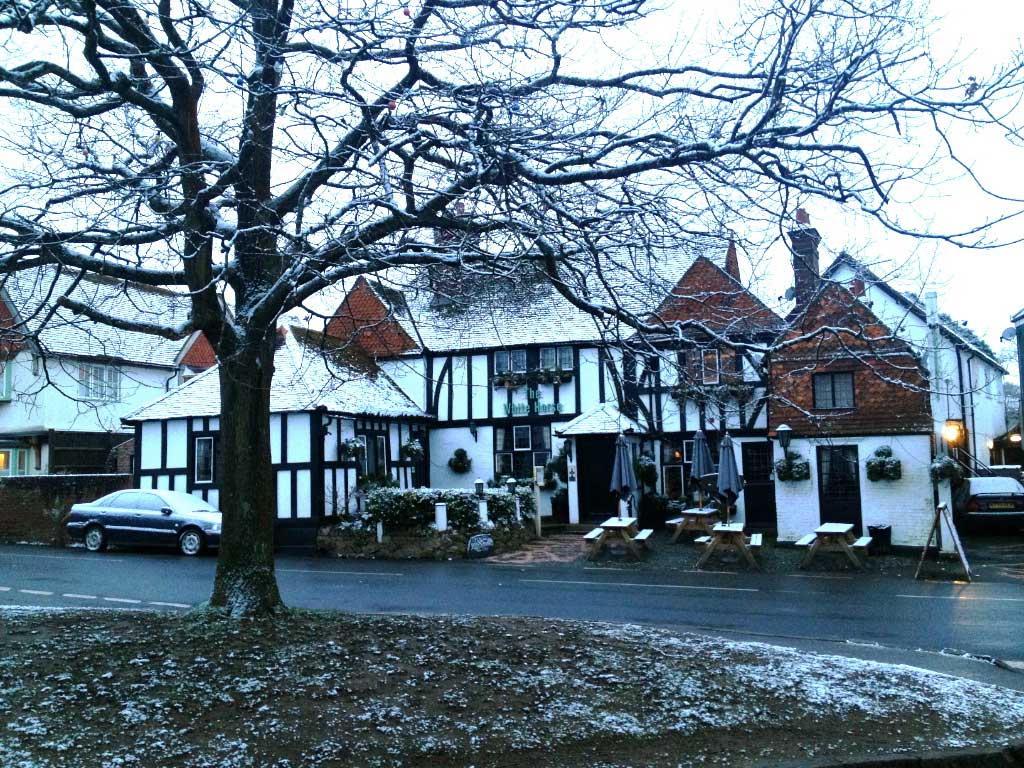
White Horse, Shere - January 2013

The Square - Looking the other way from the White Horse - January 2013
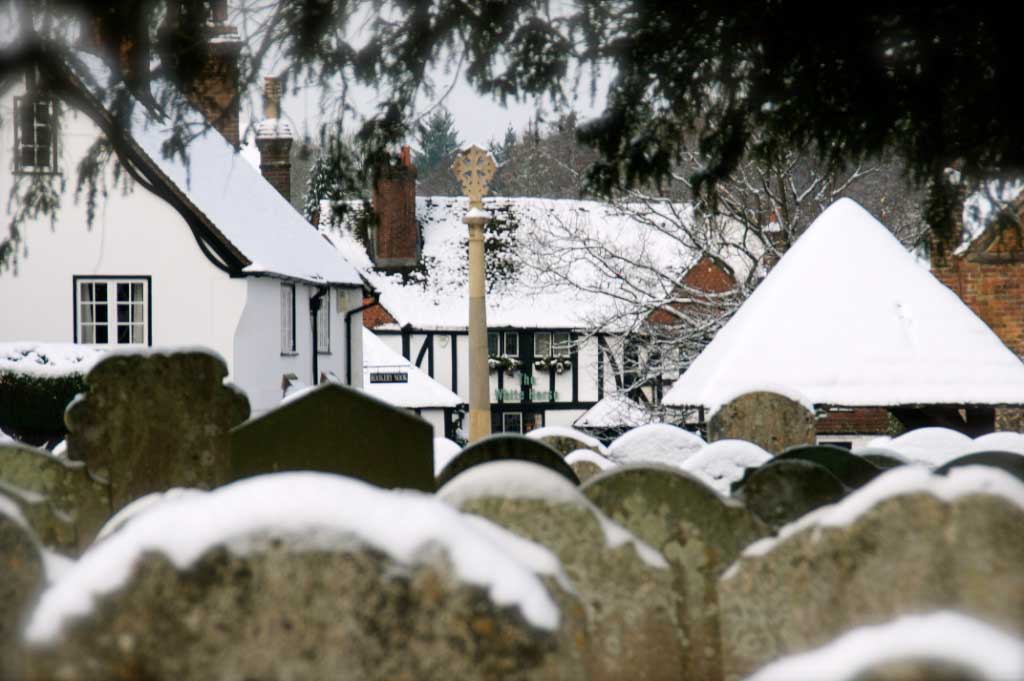
21st January 2013 -
Looking at The White Horse from St. James' Church -
above photo's ©2013 Tristan
|
|
|
|
|
Special Thanks...
...to Shere Museum for access and permission to publish some of the older photographs from their archives - Please visit and support the Village Museum.
|






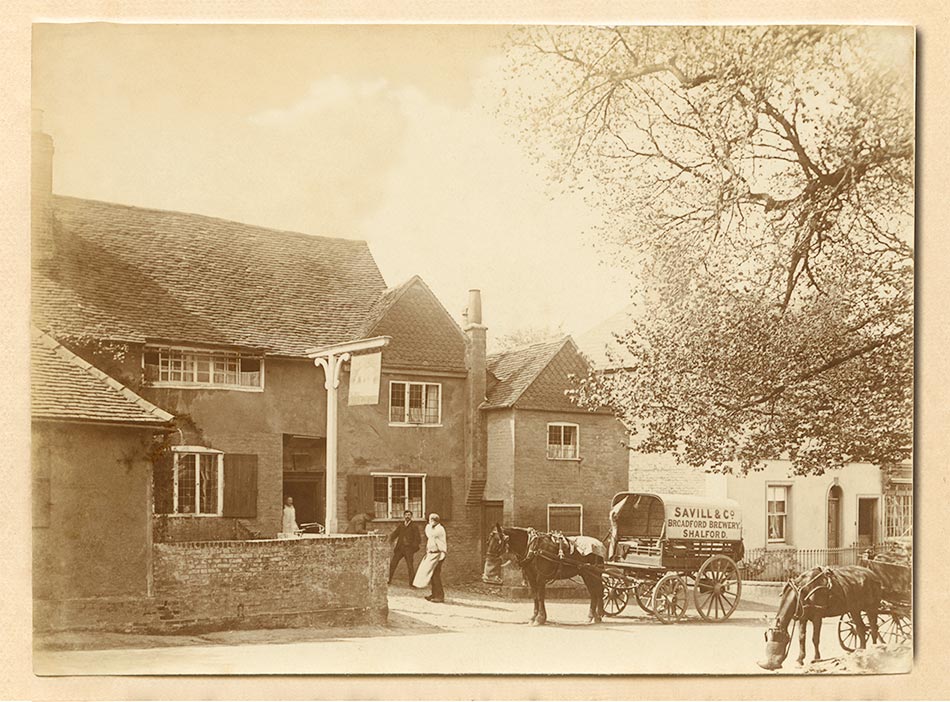
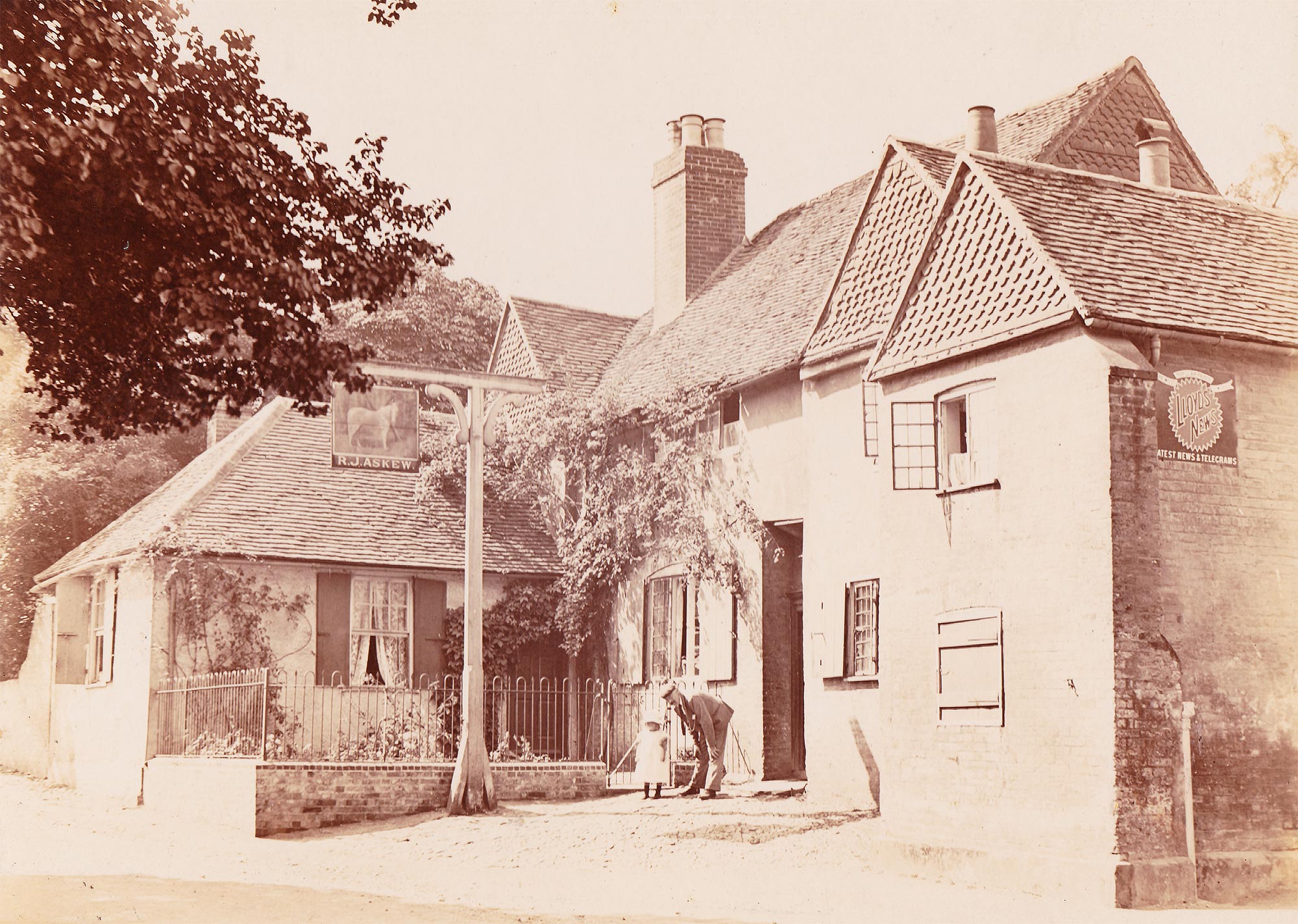






 Note the 'New White Horse' sign and positioned so that it is facing outwards - Approx 1904
Note the 'New White Horse' sign and positioned so that it is facing outwards - Approx 1904
